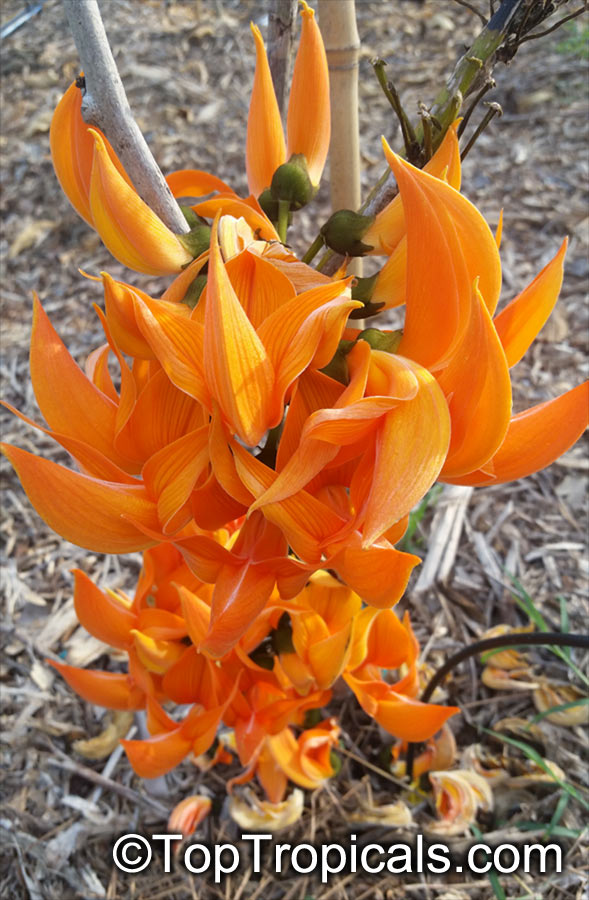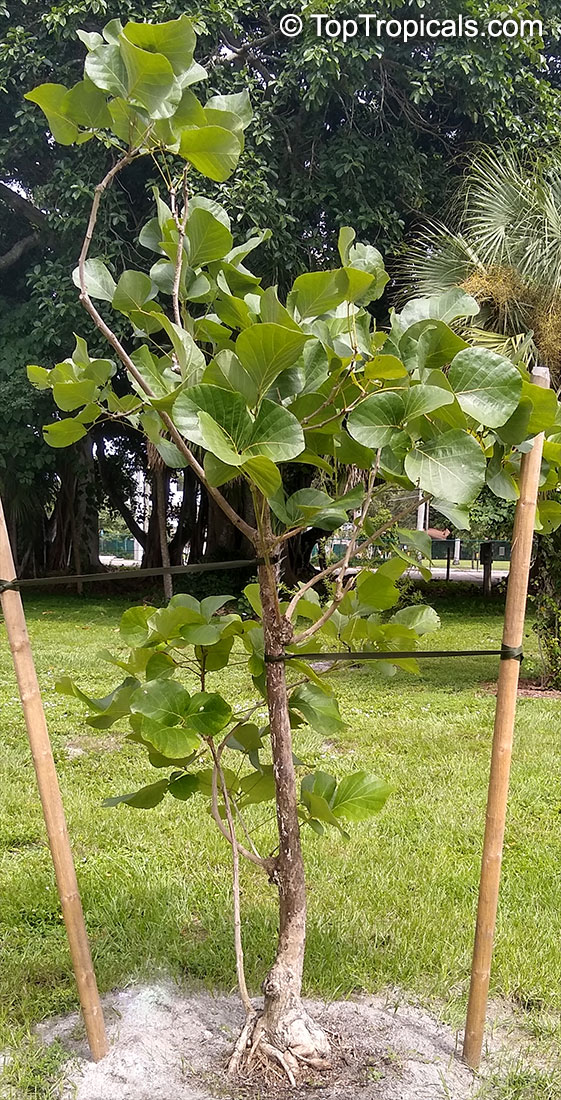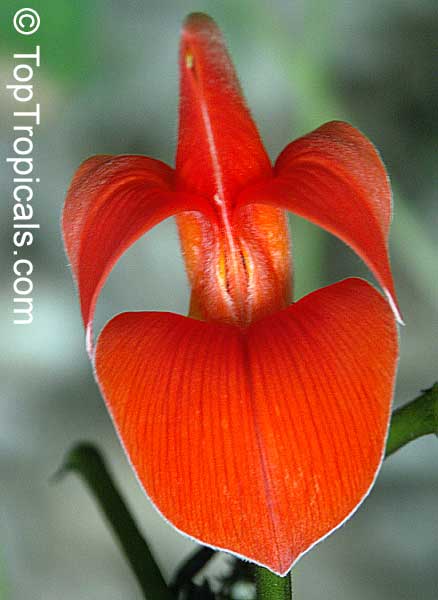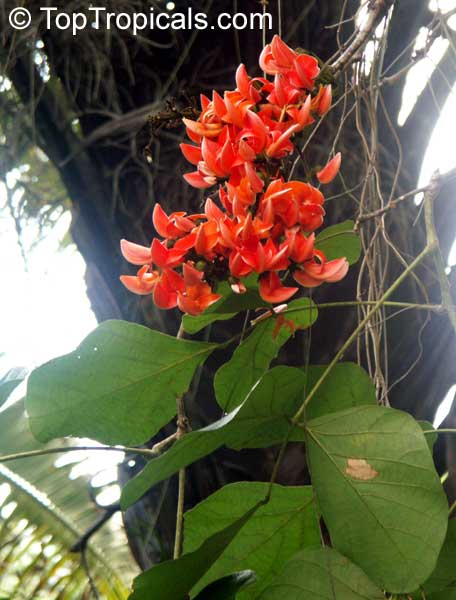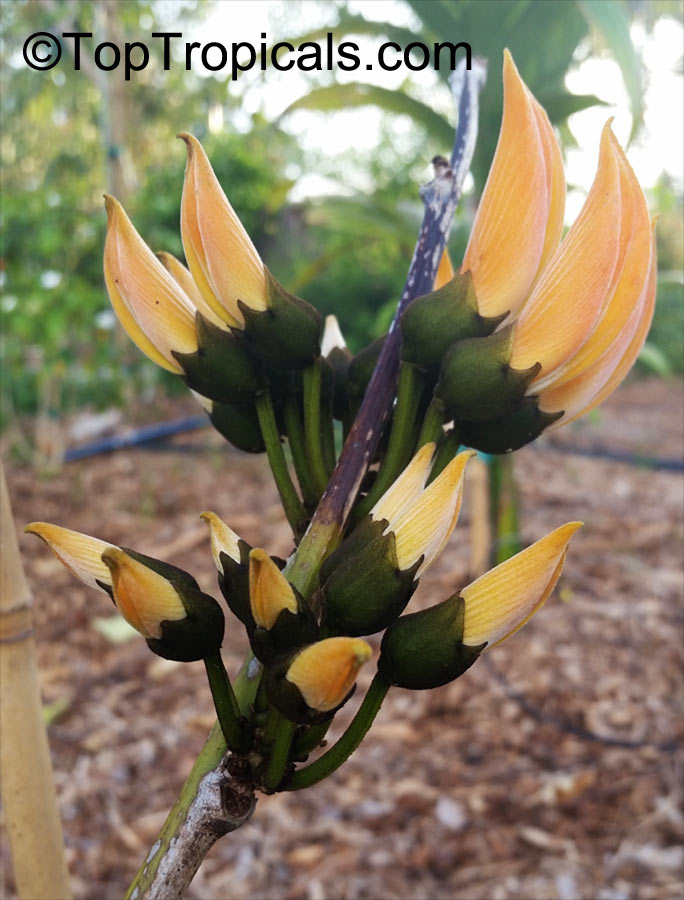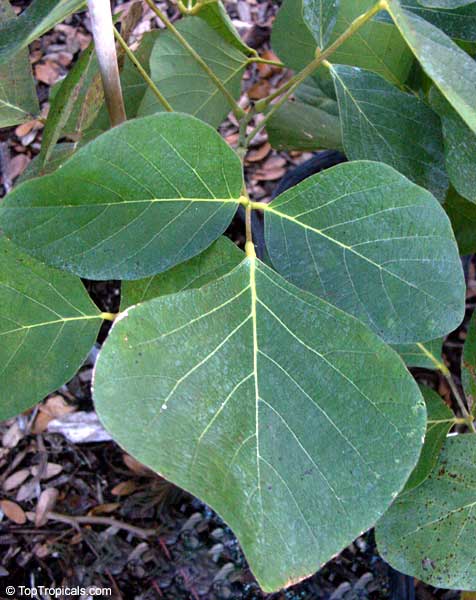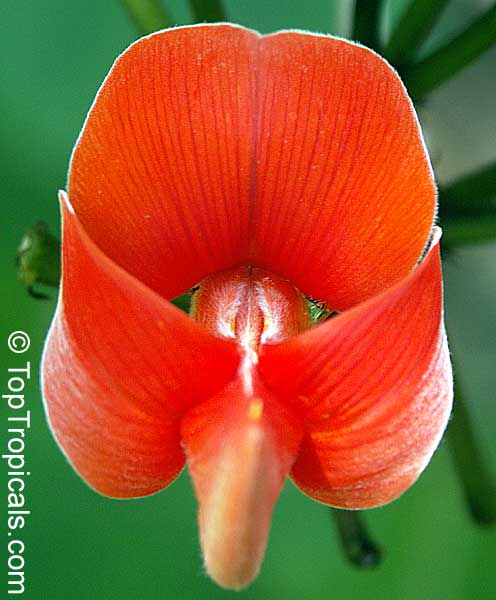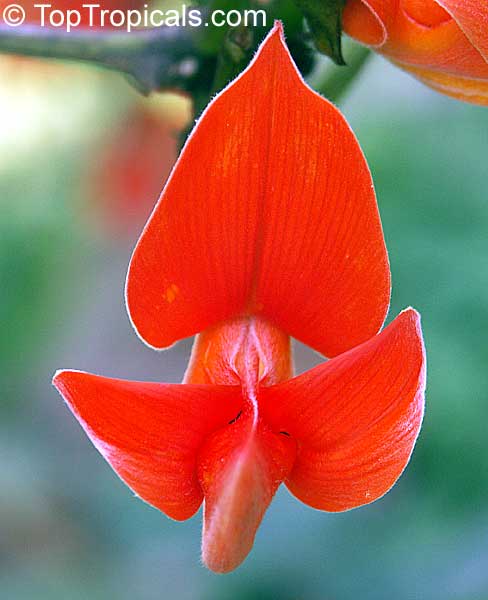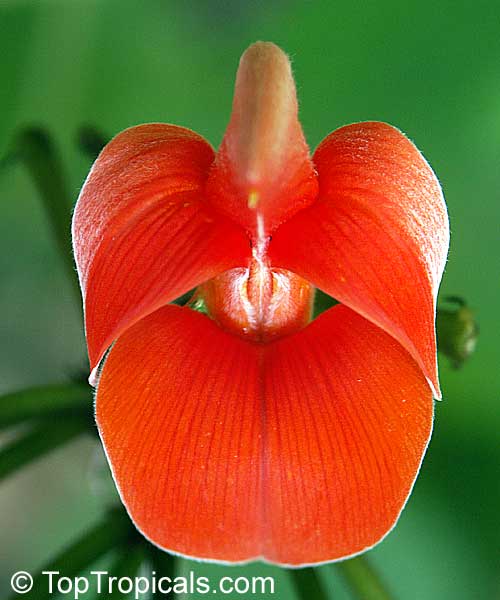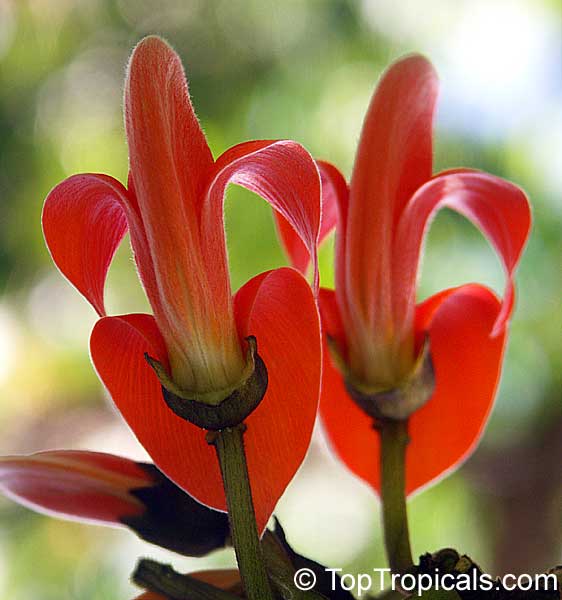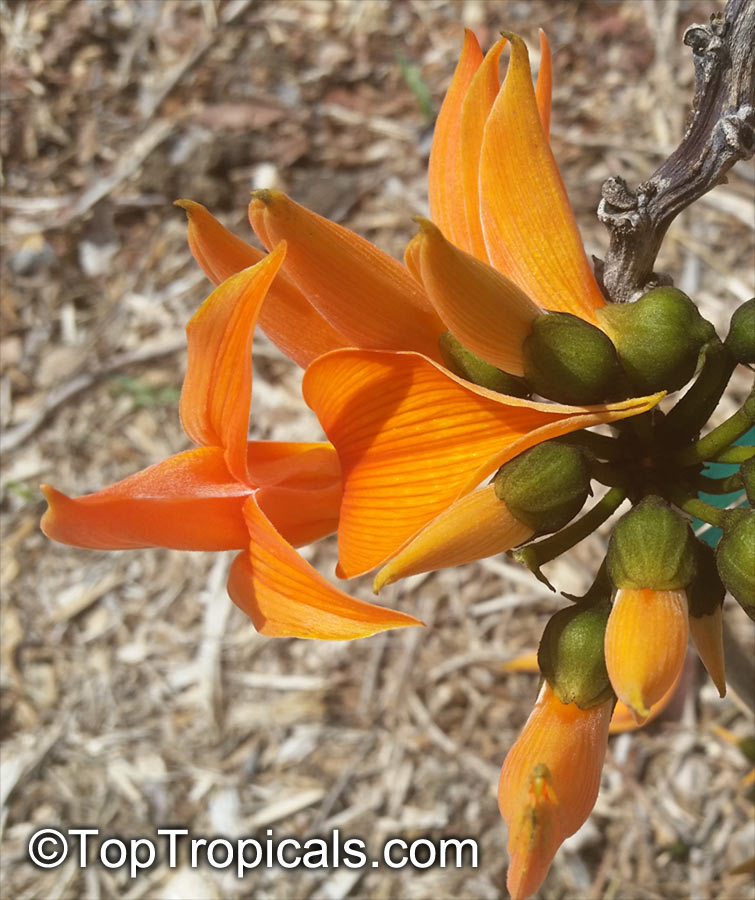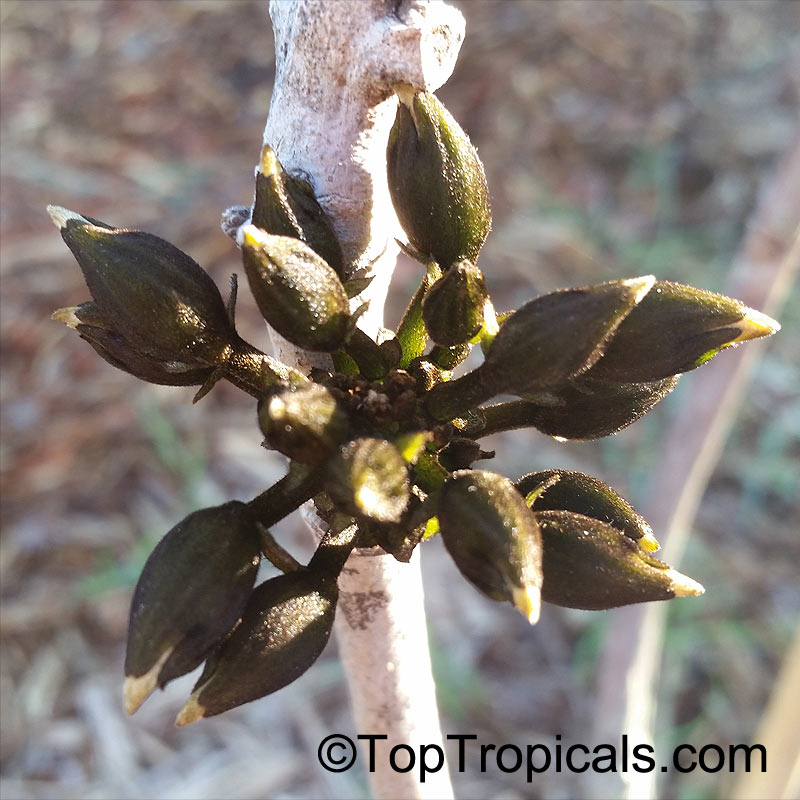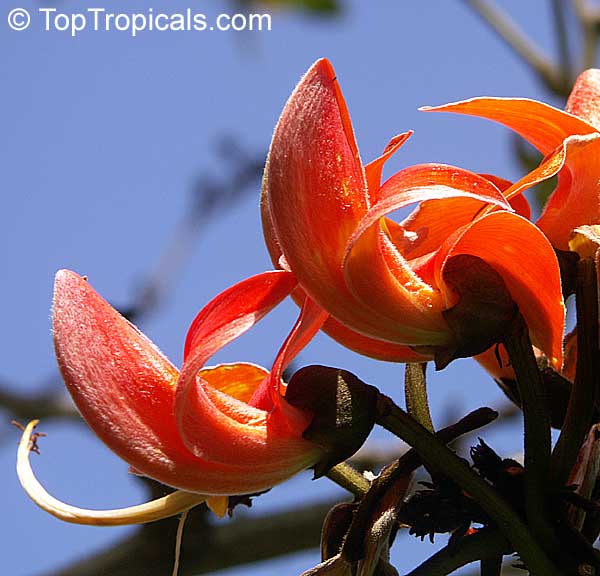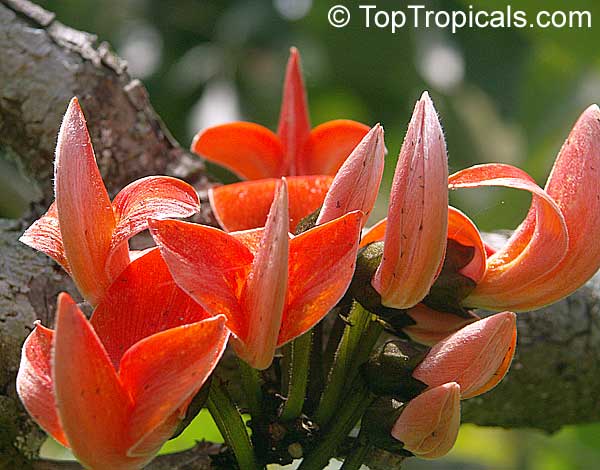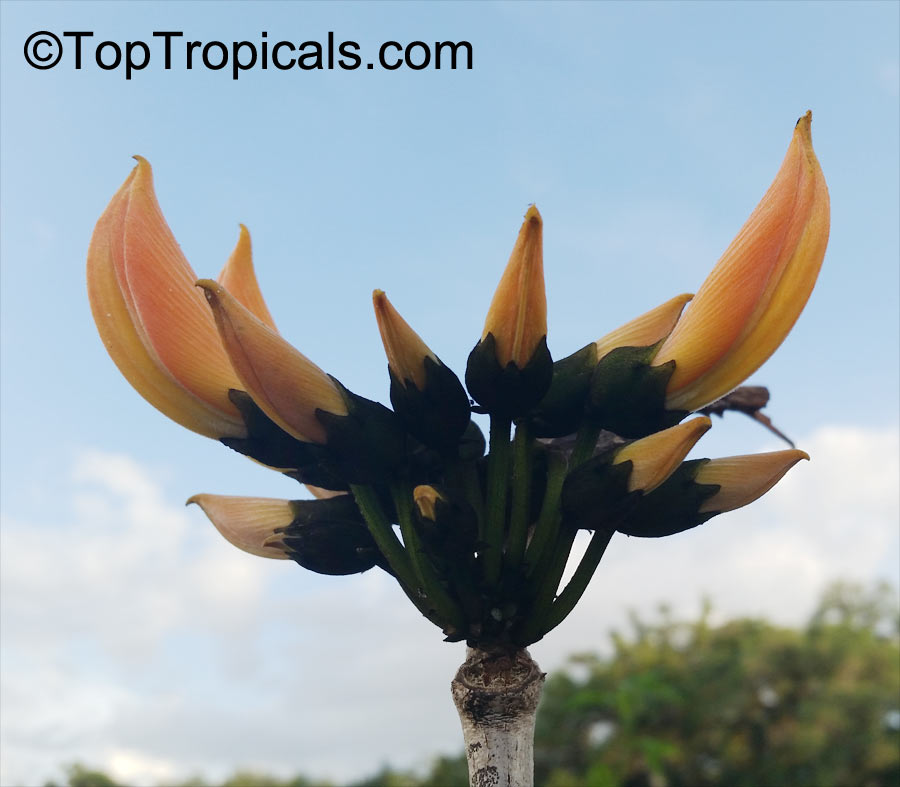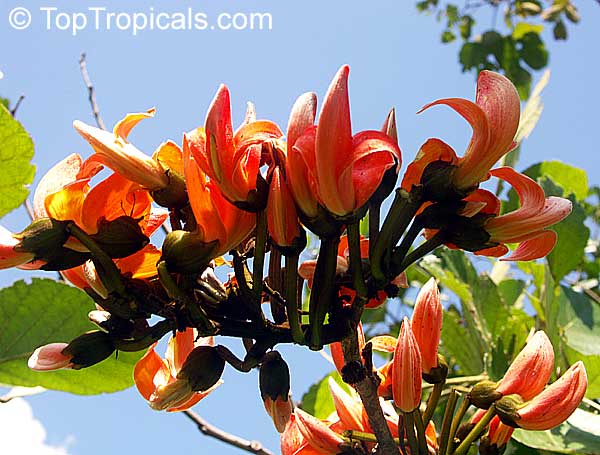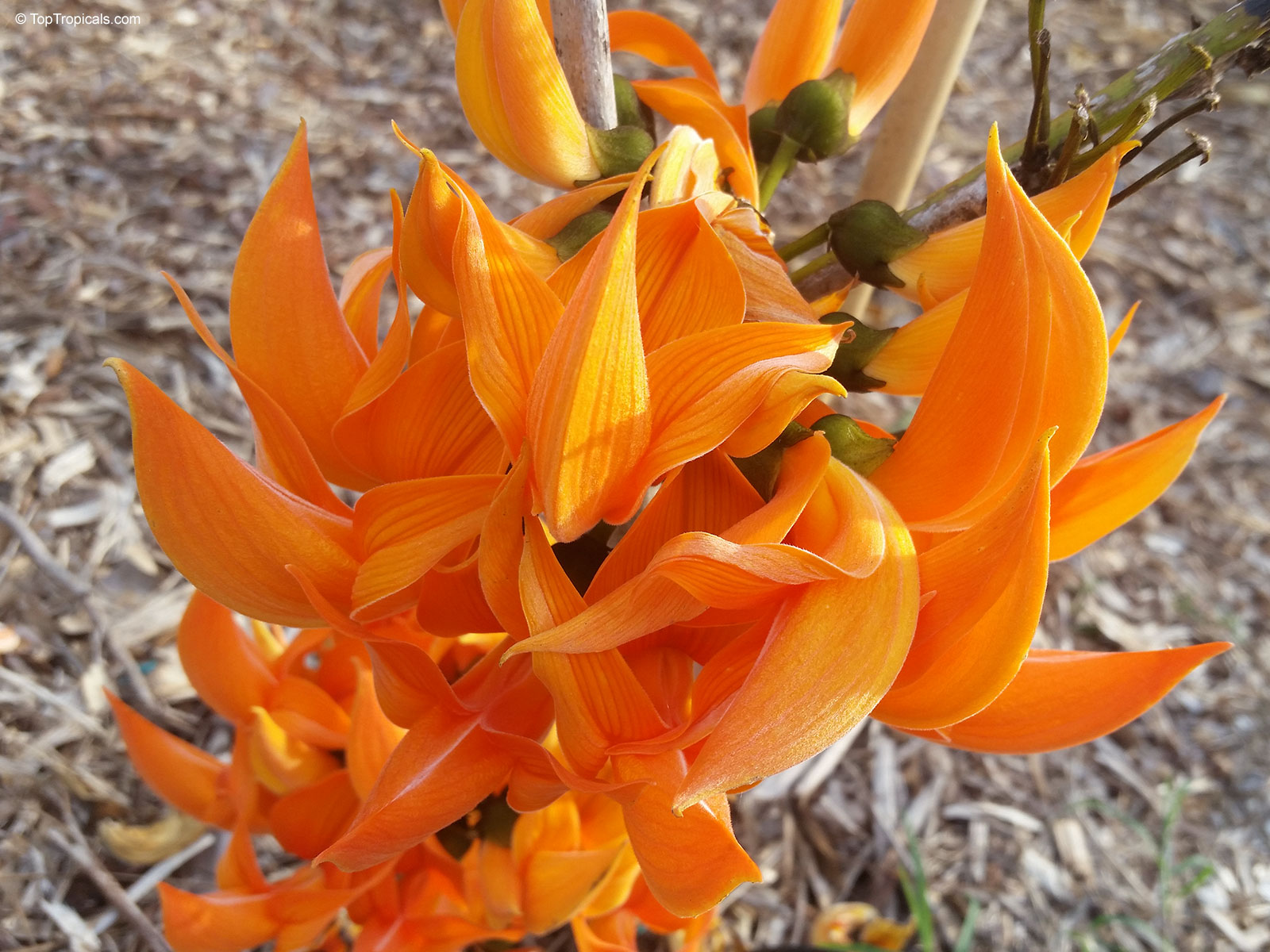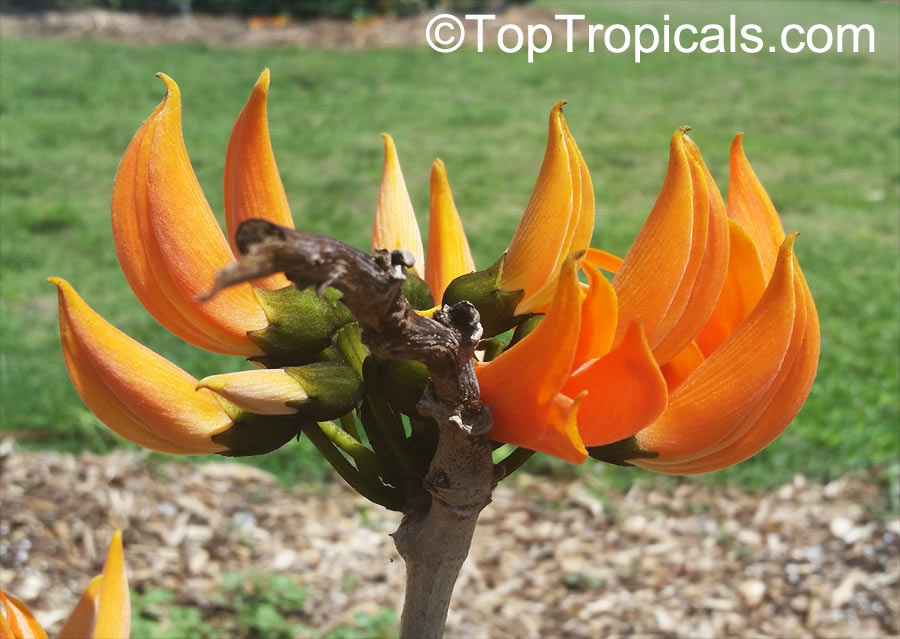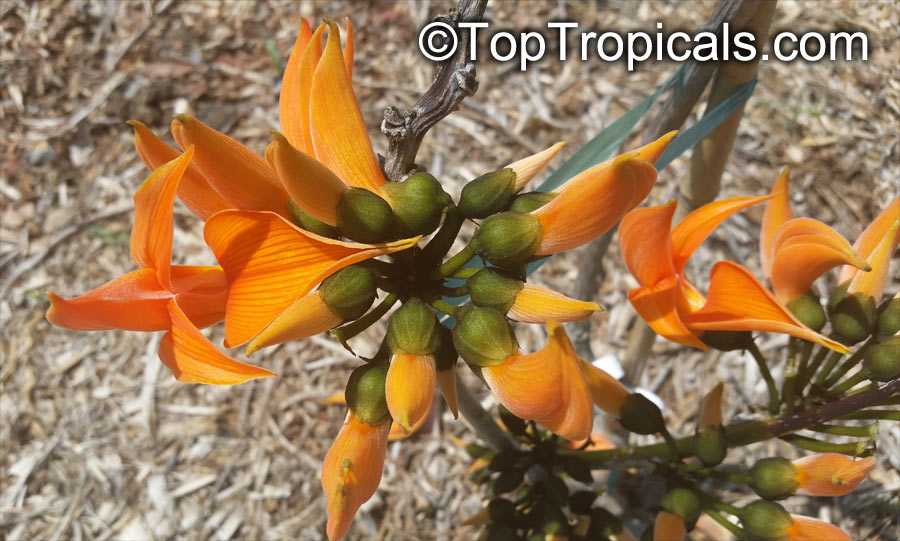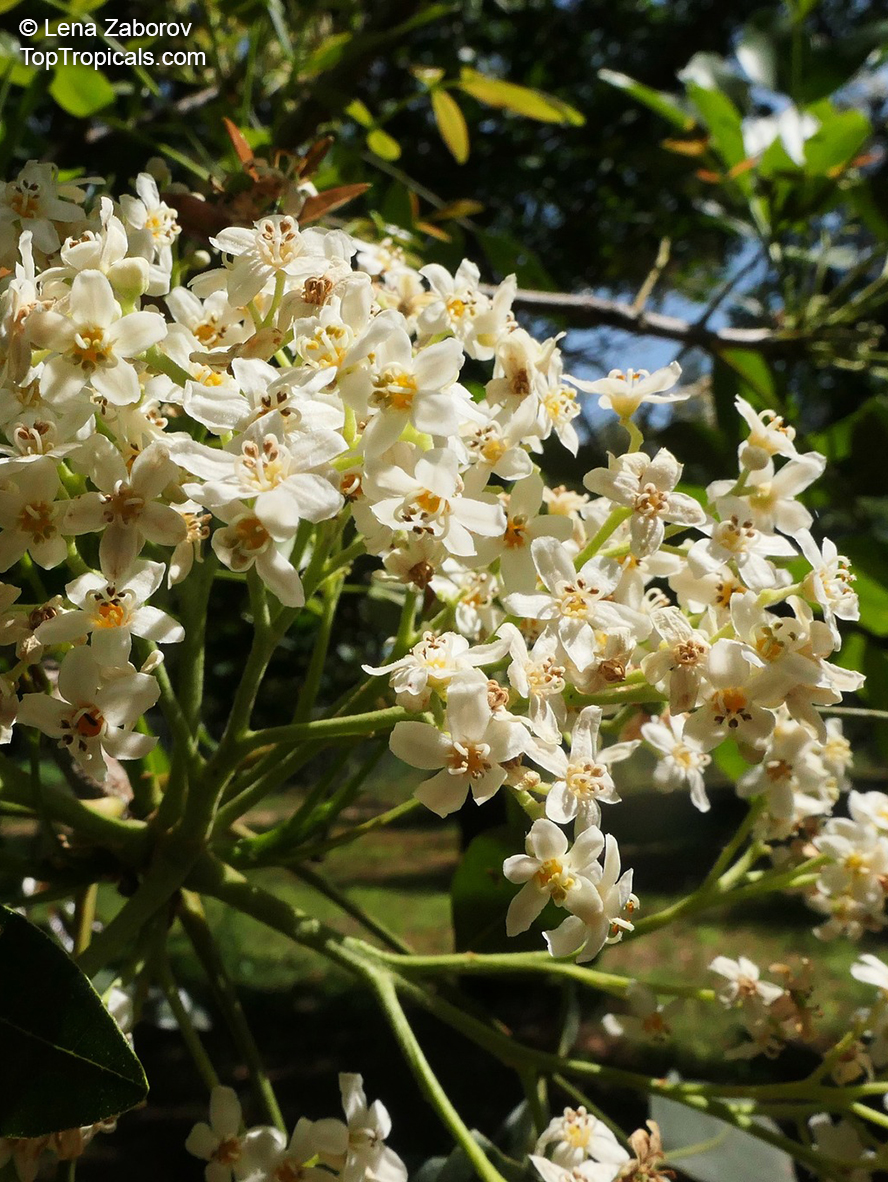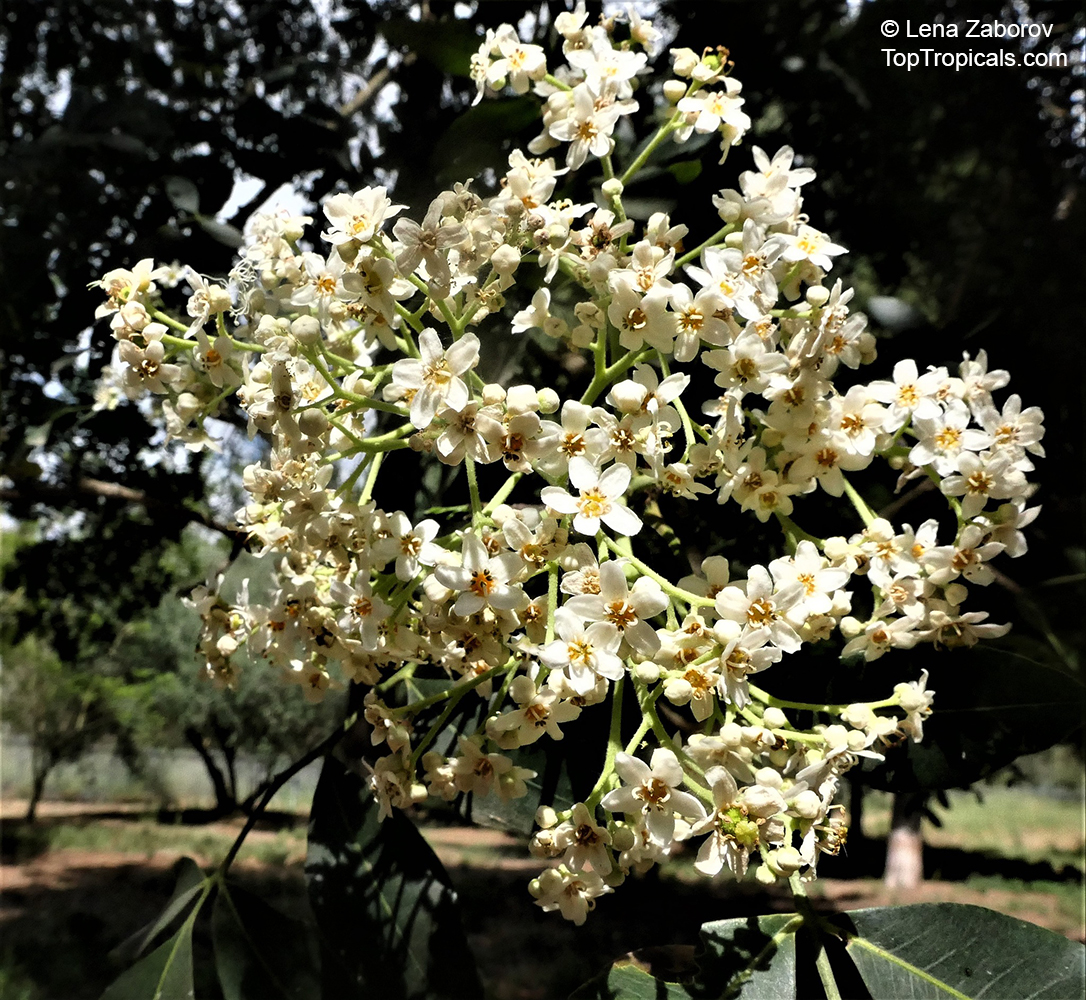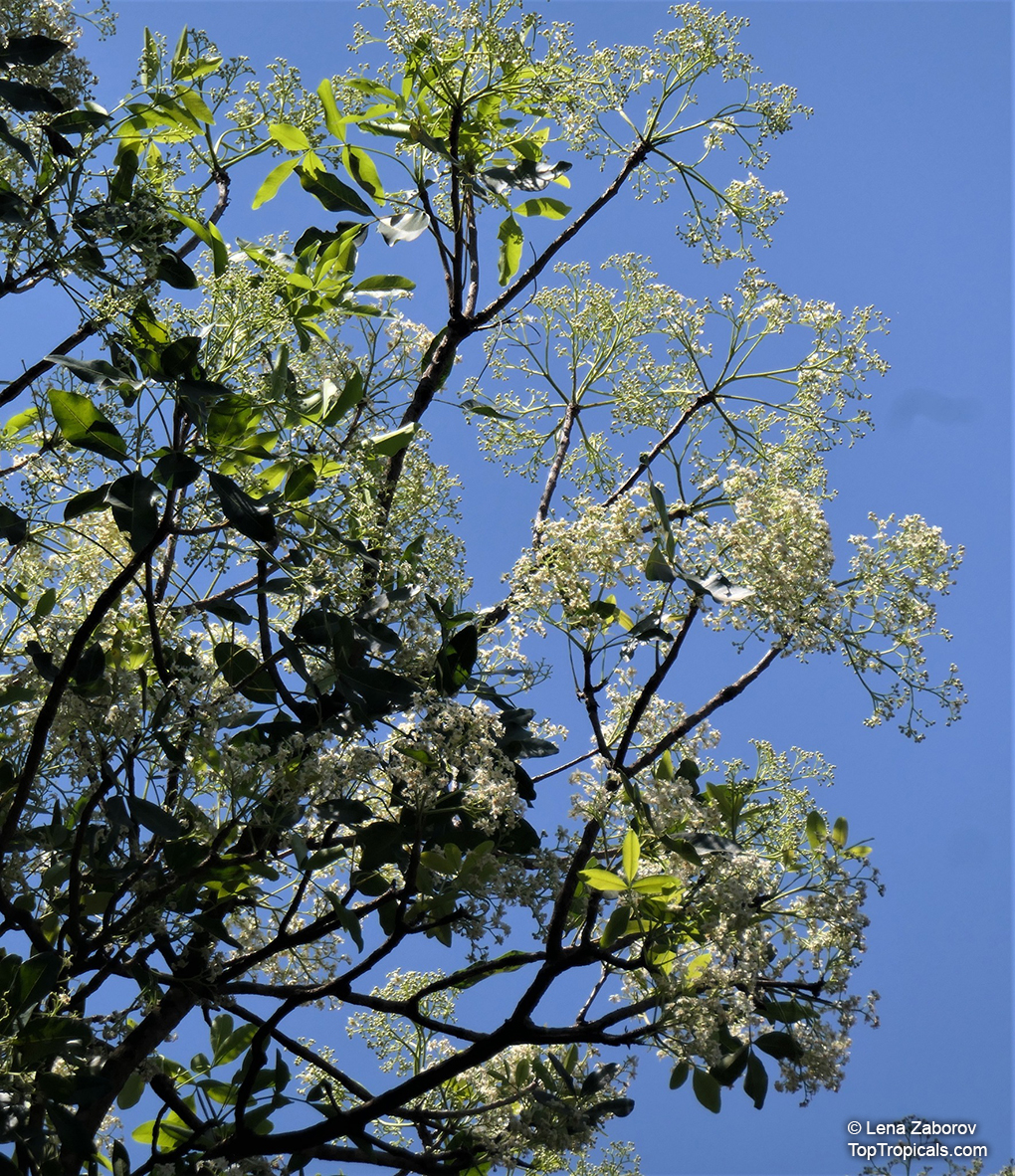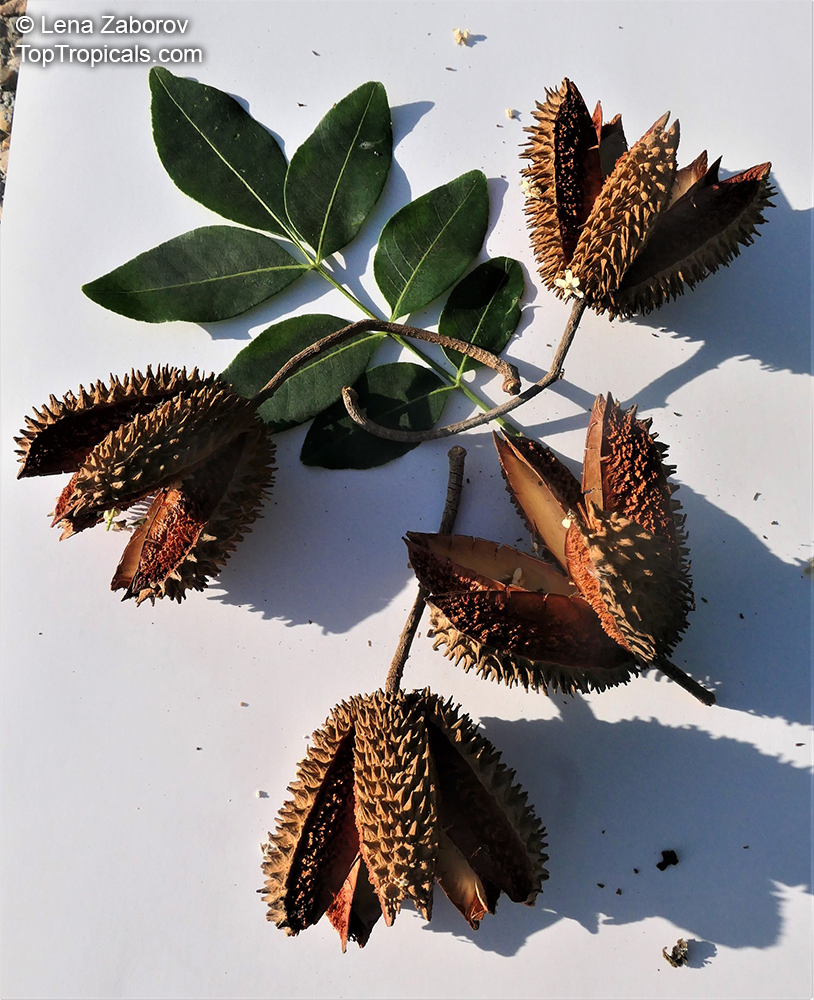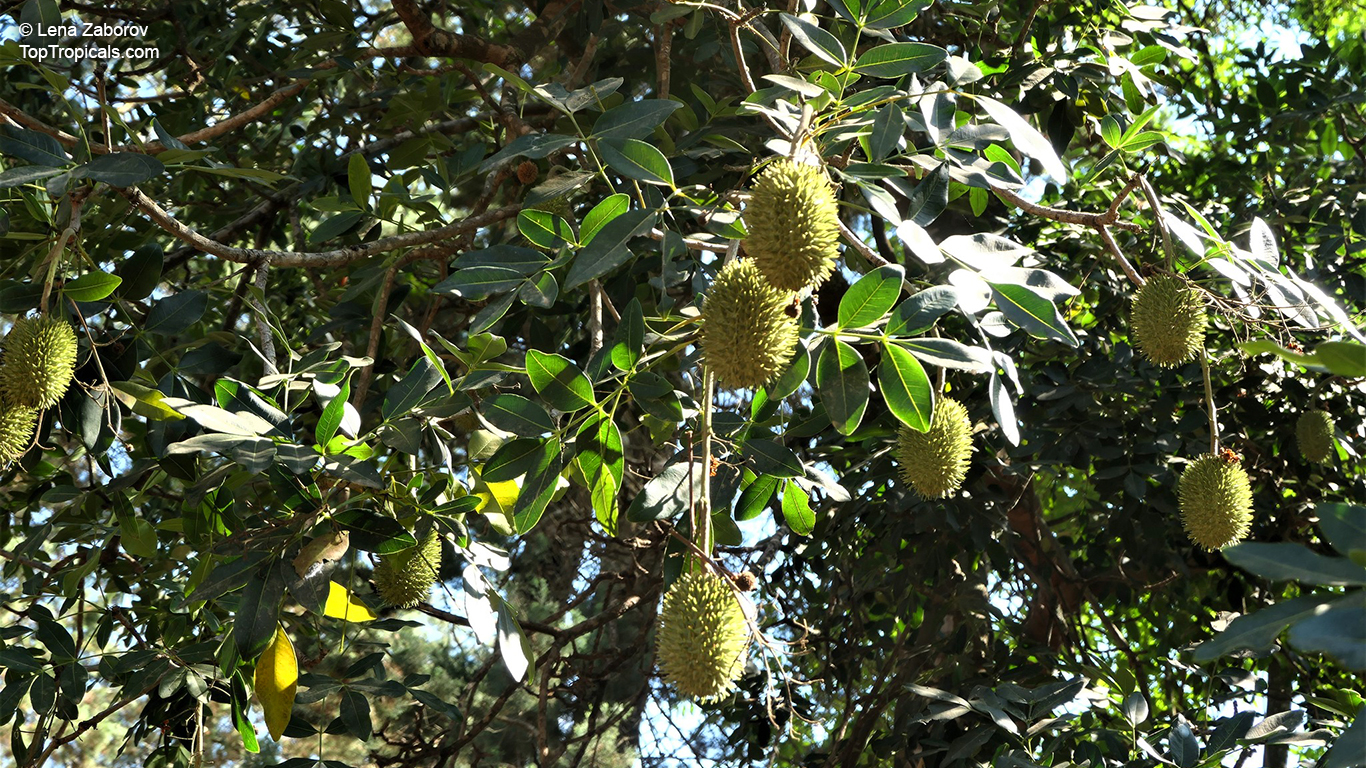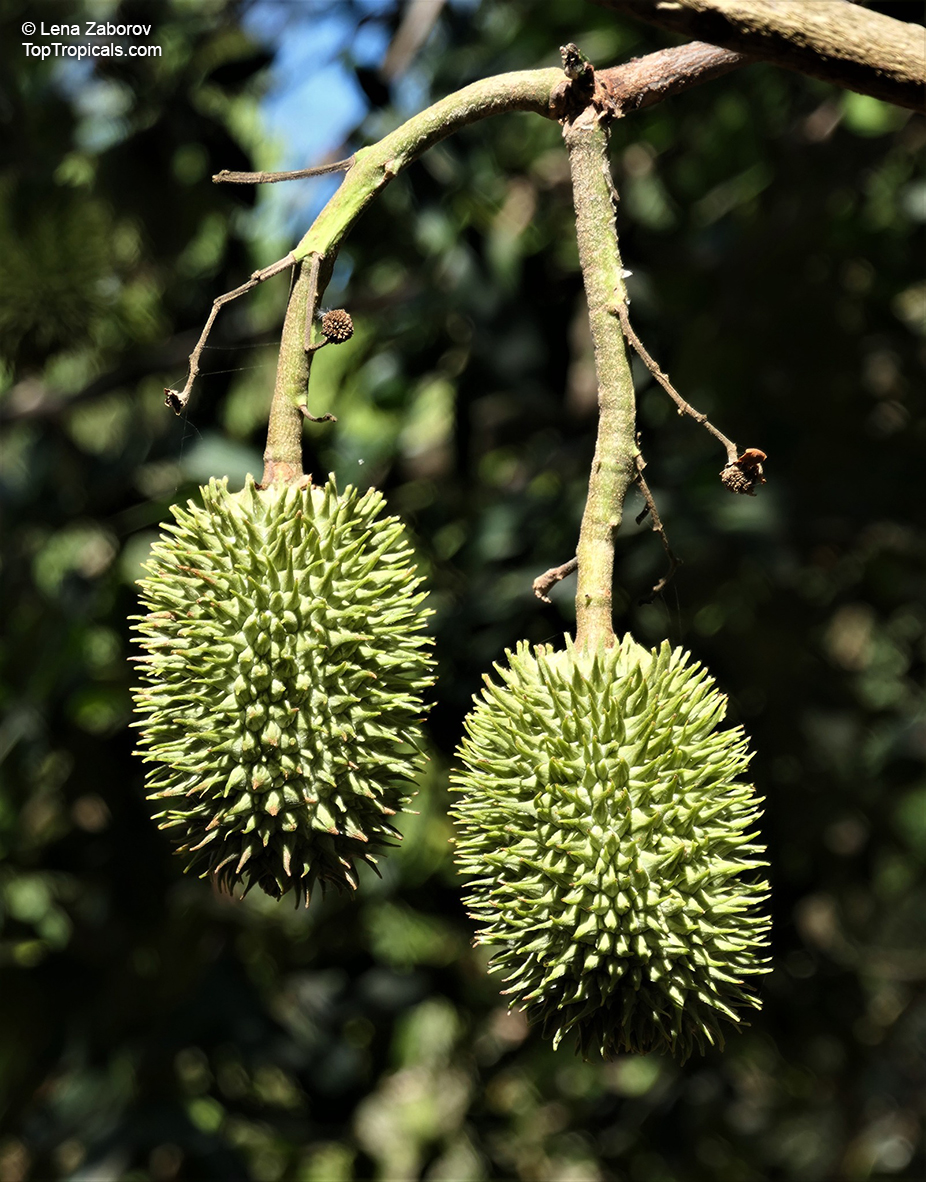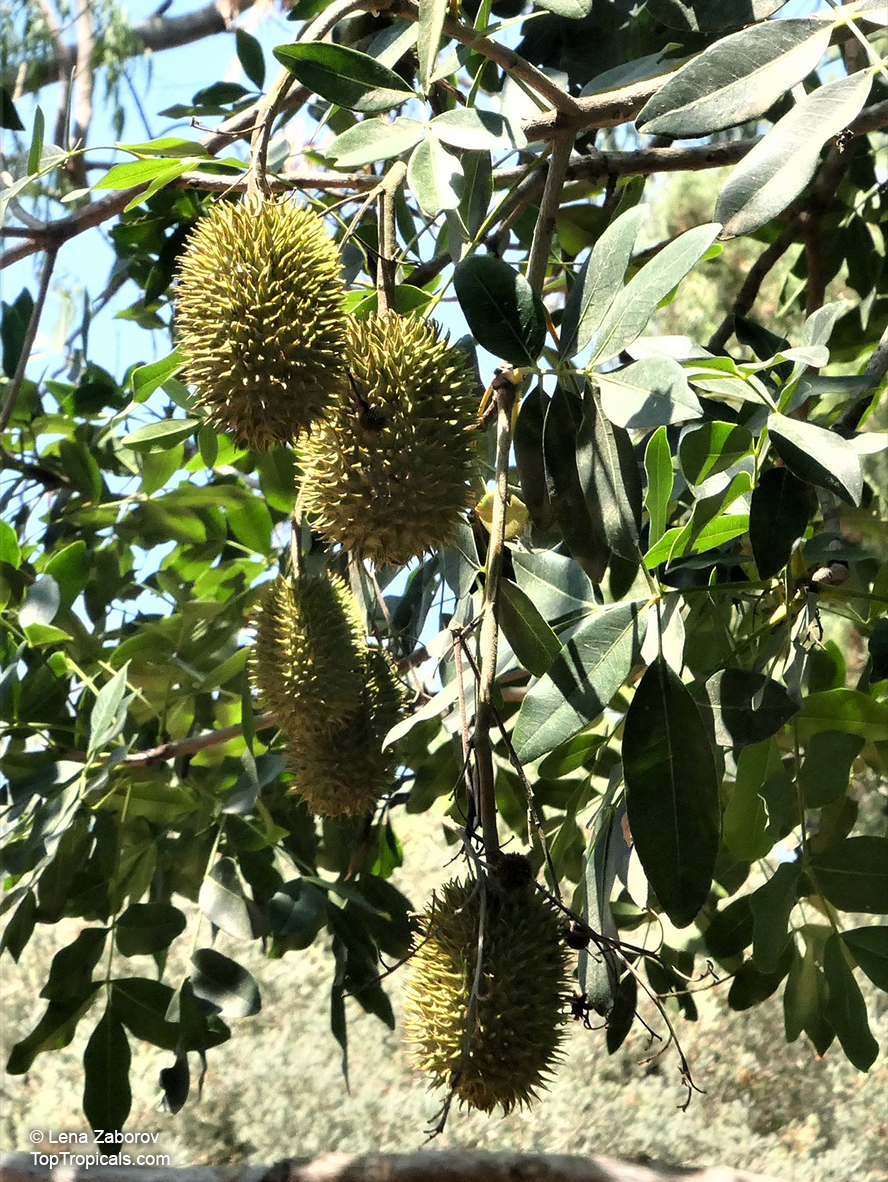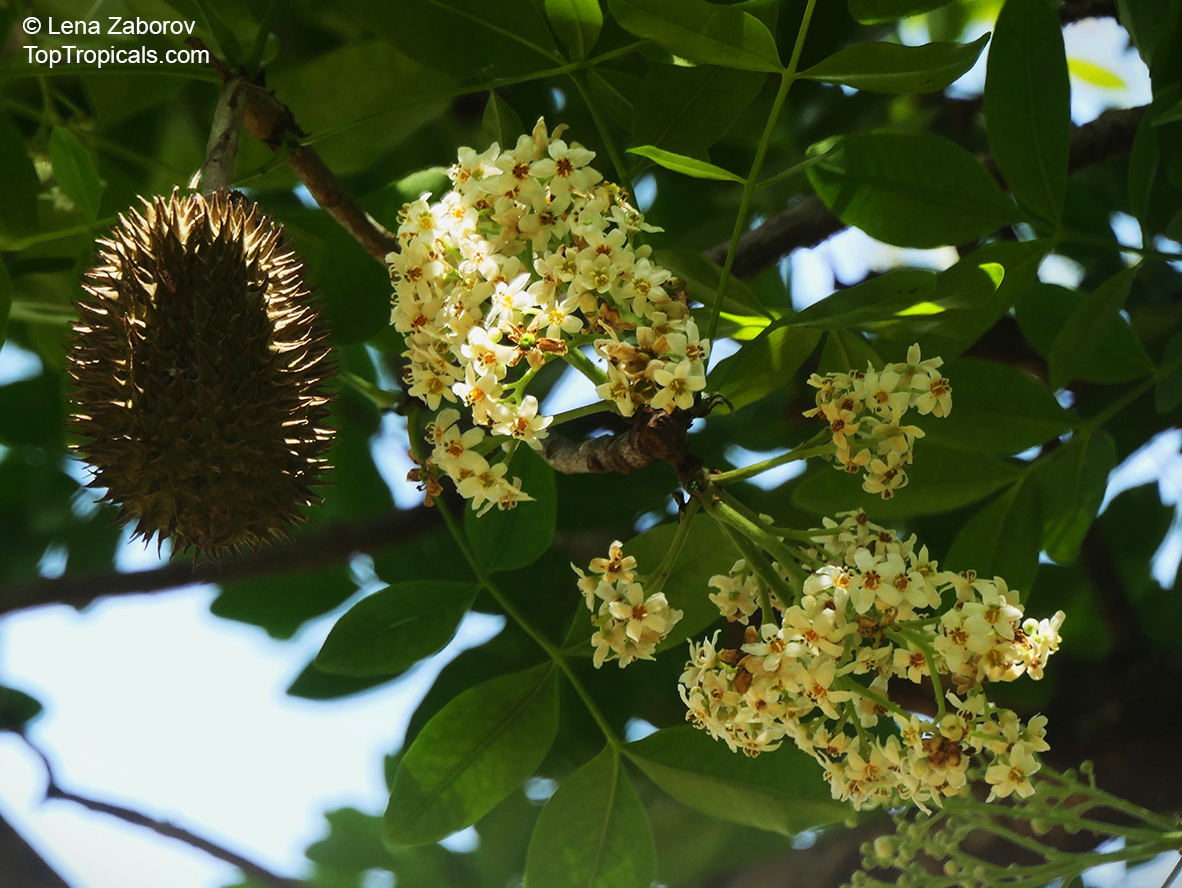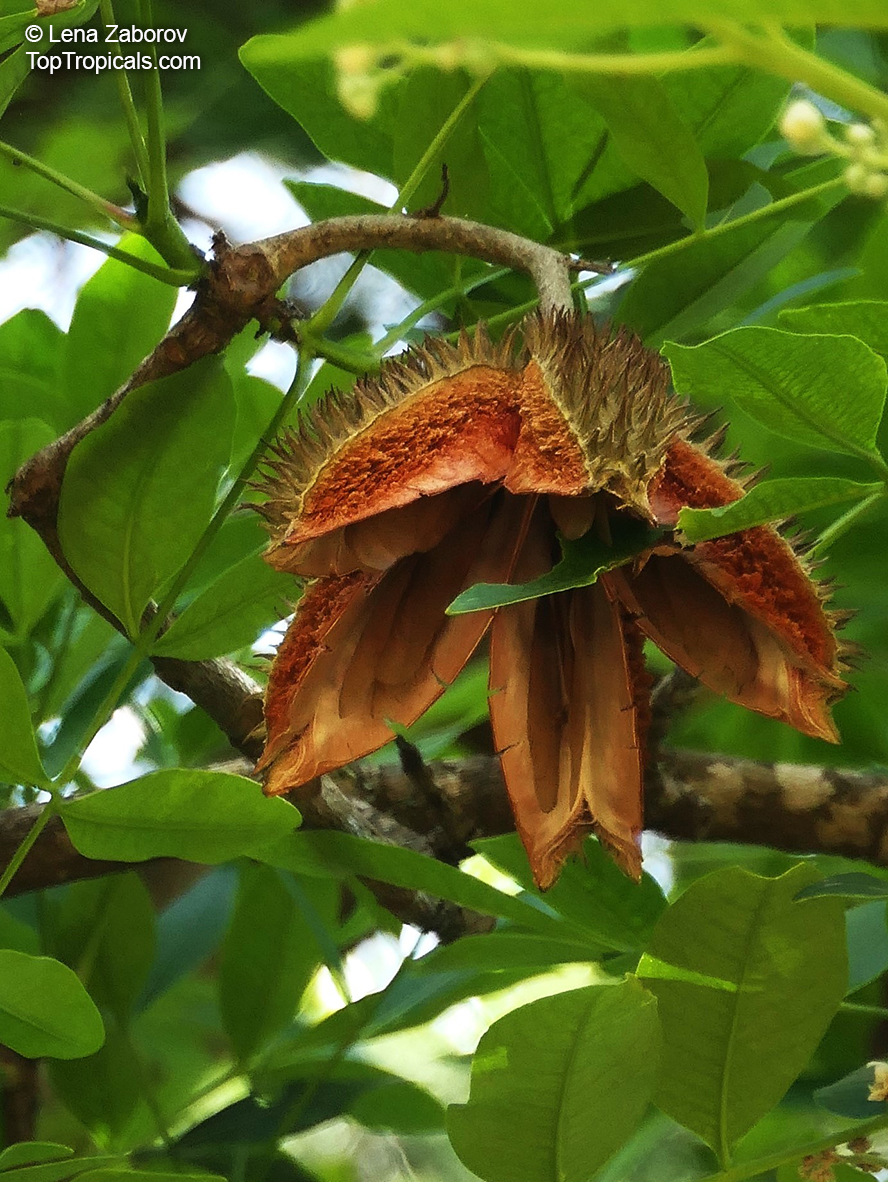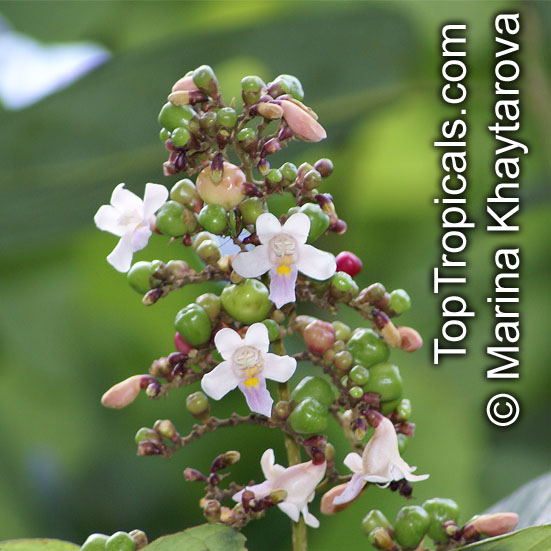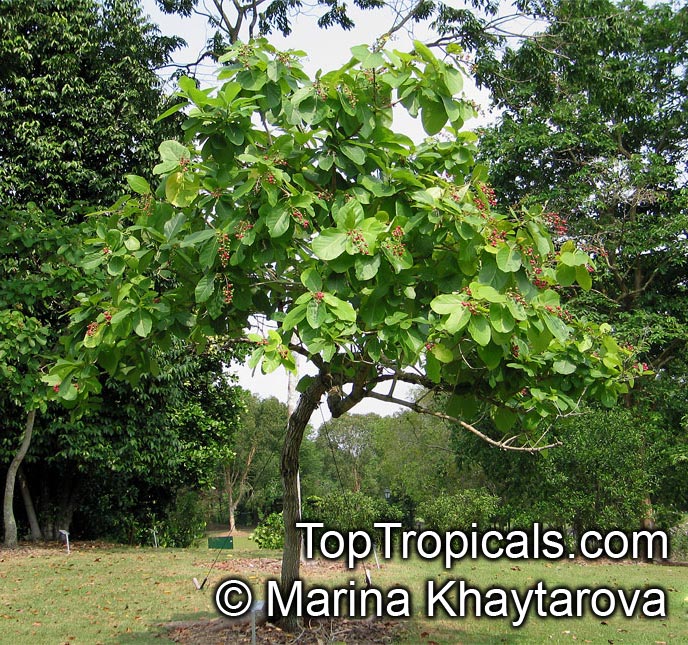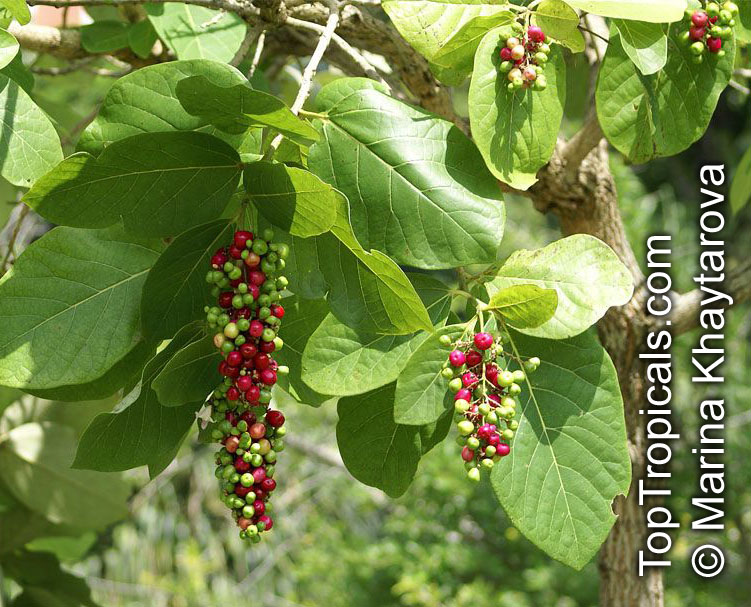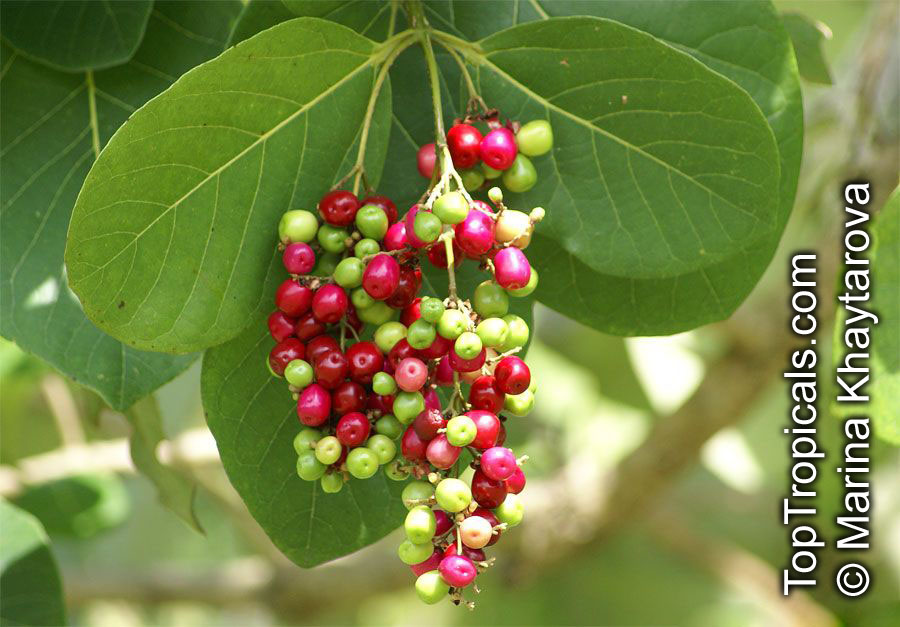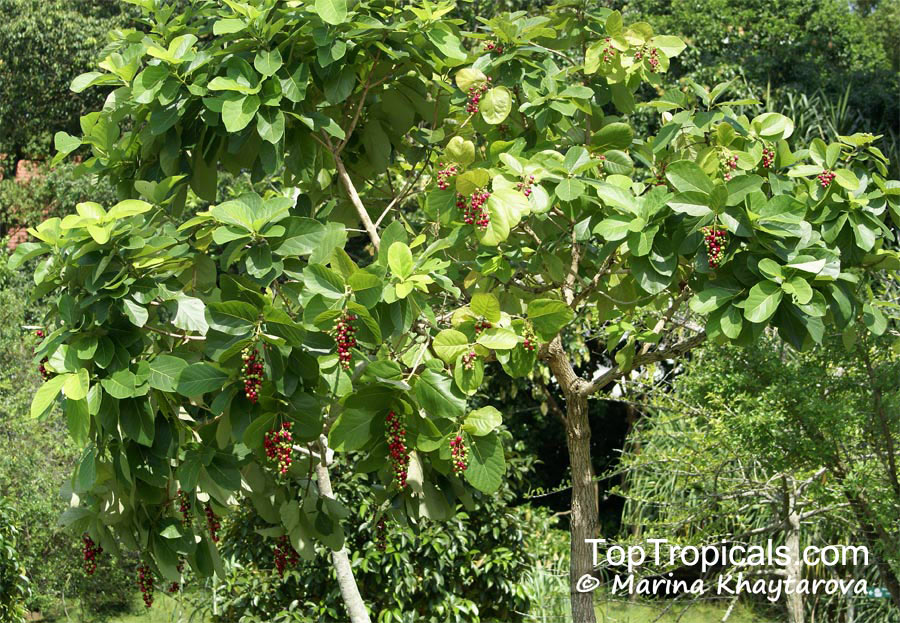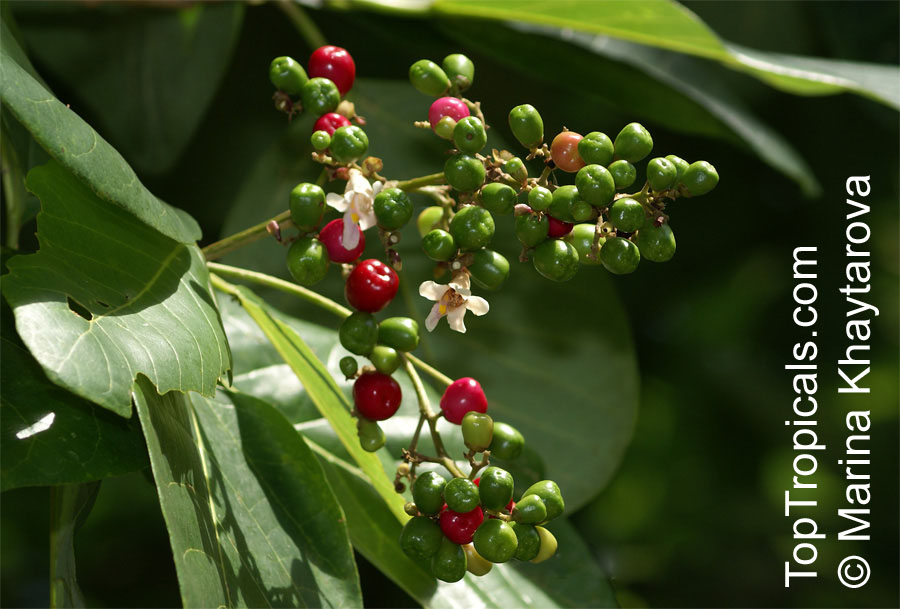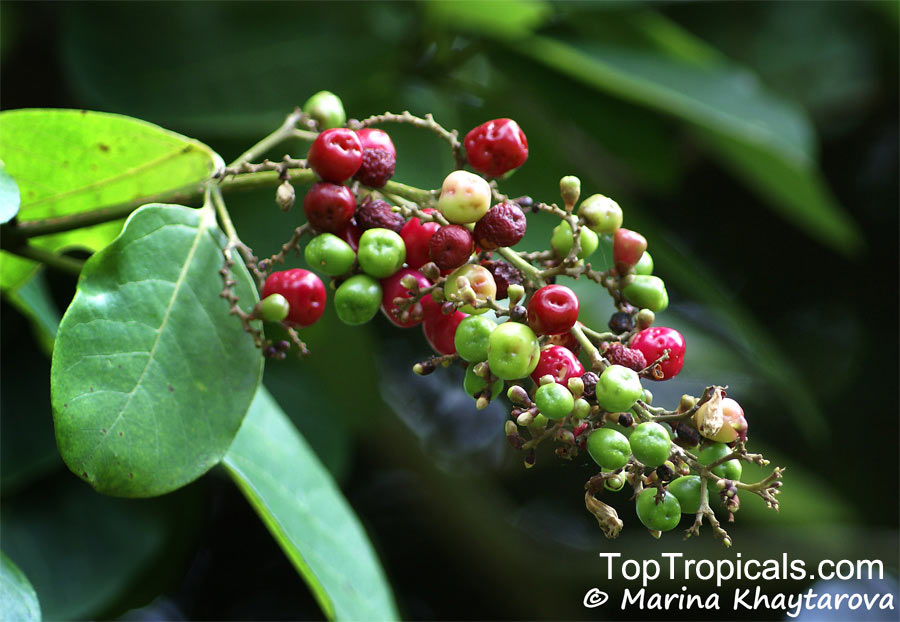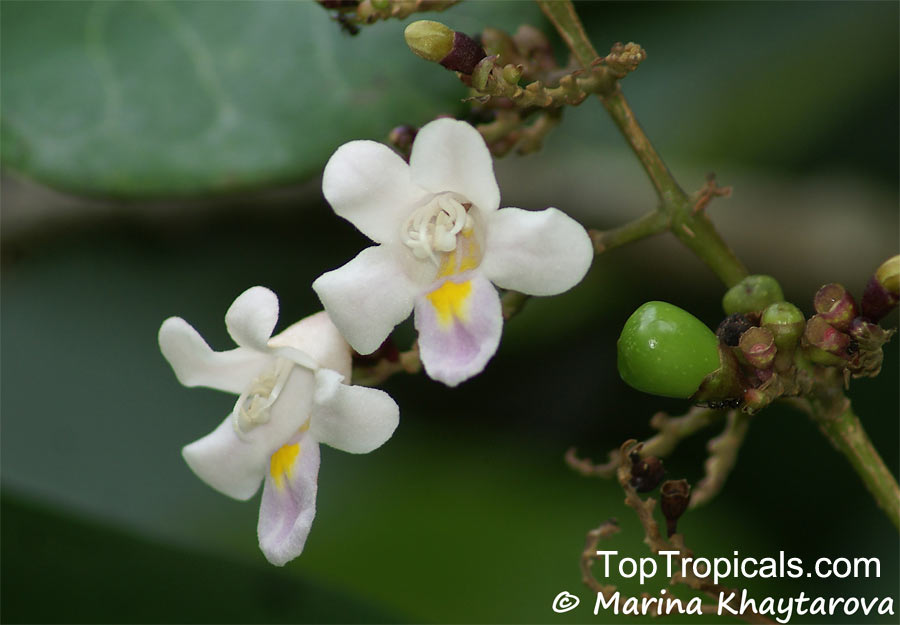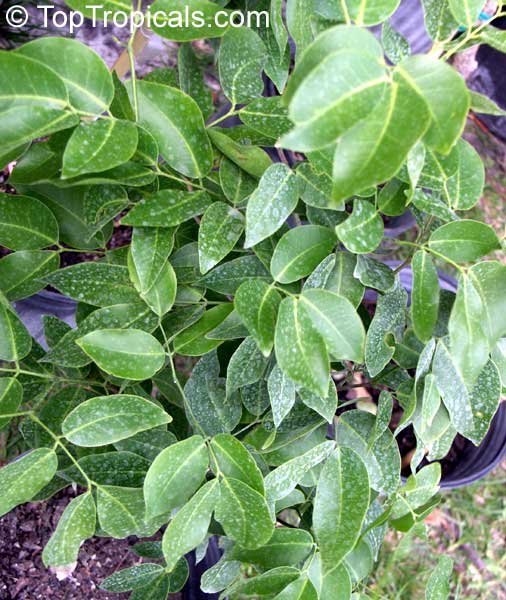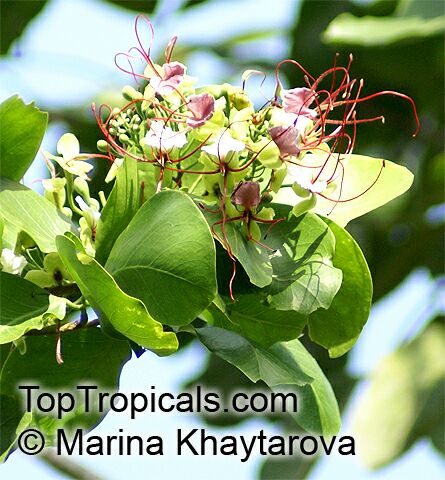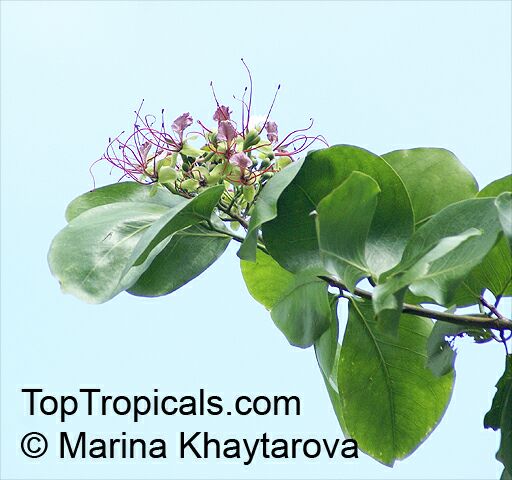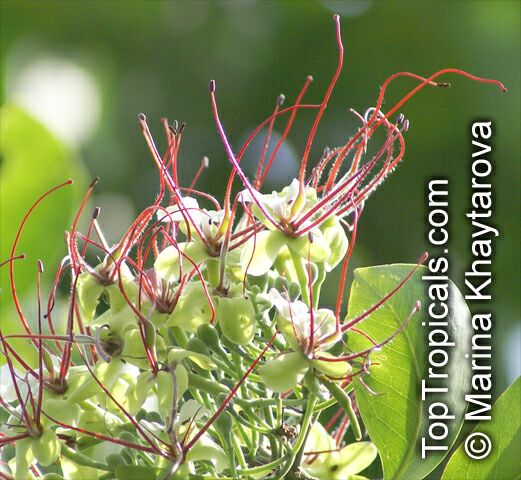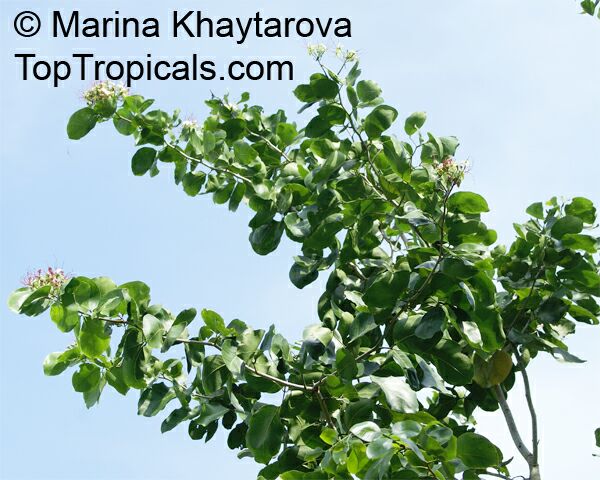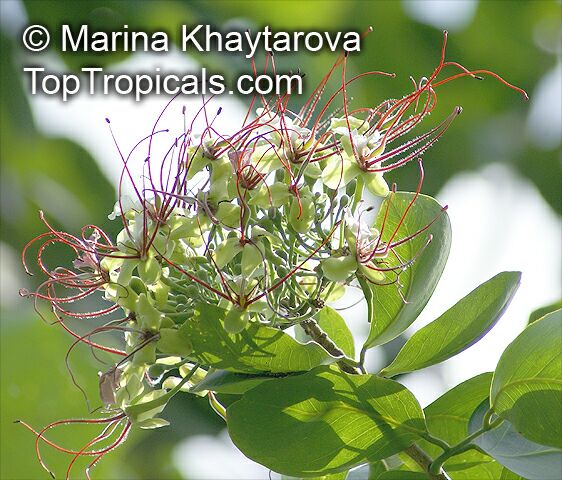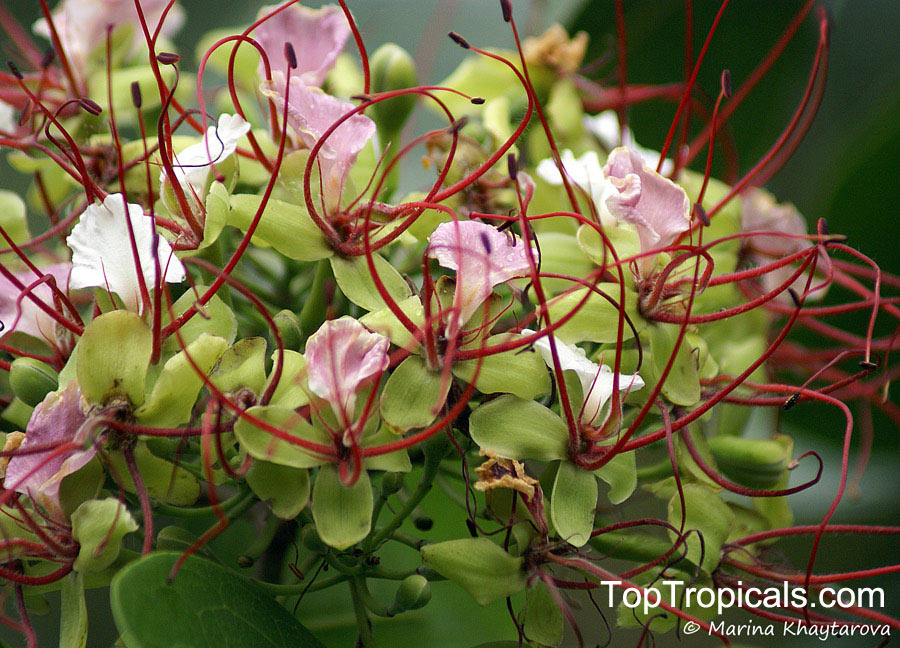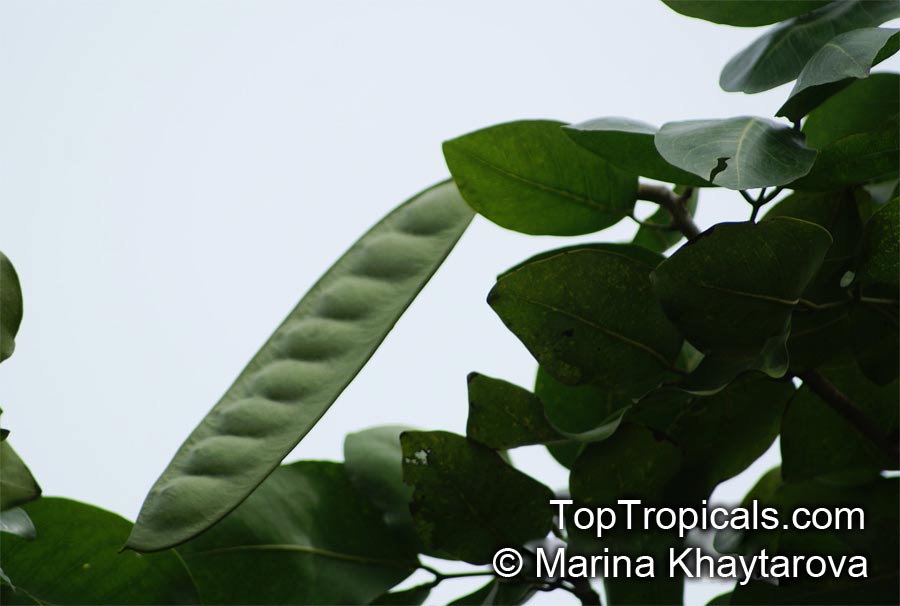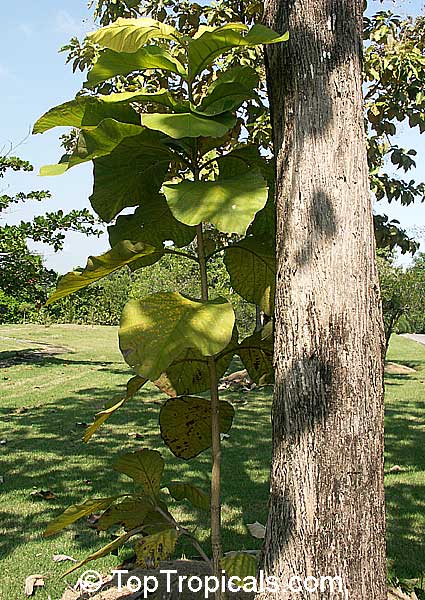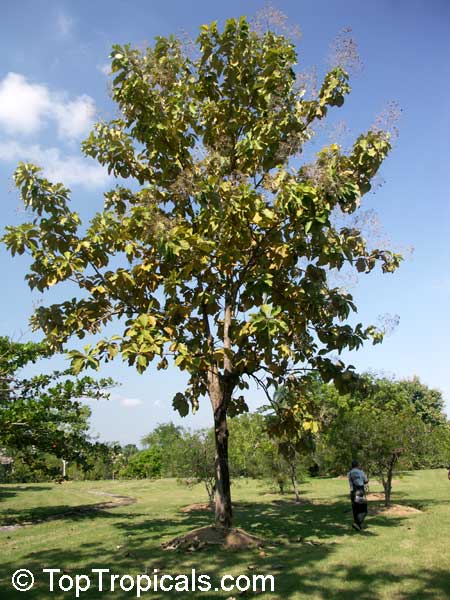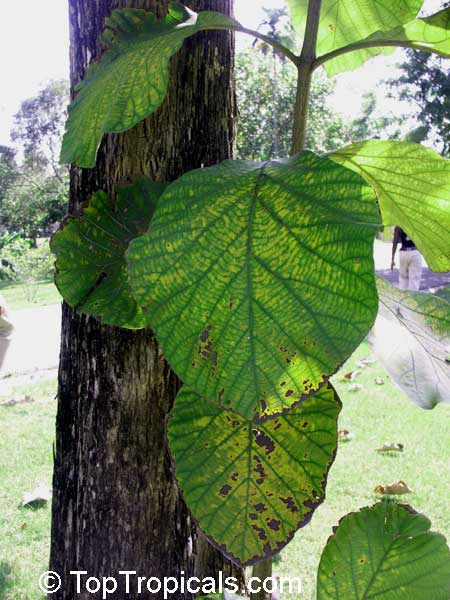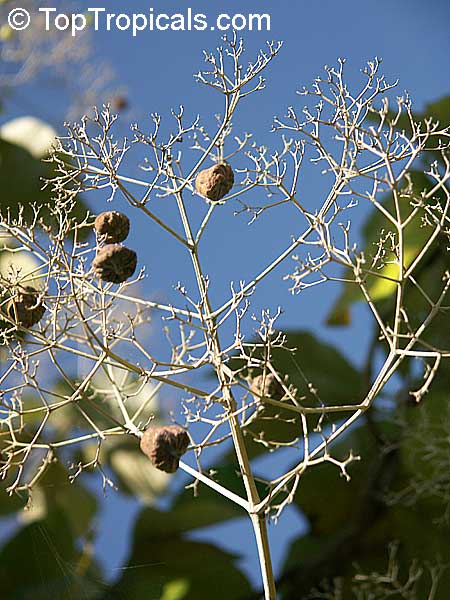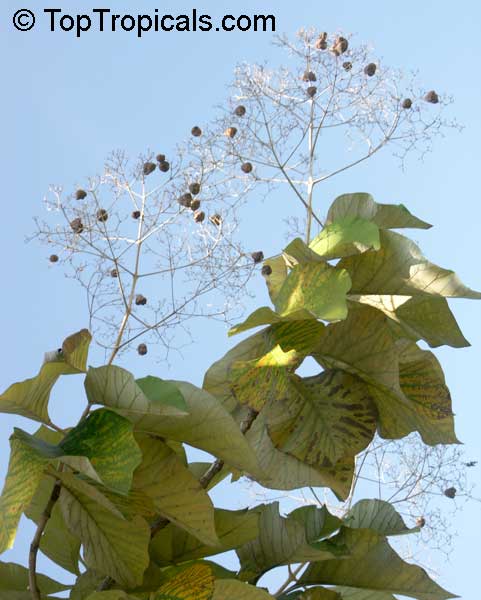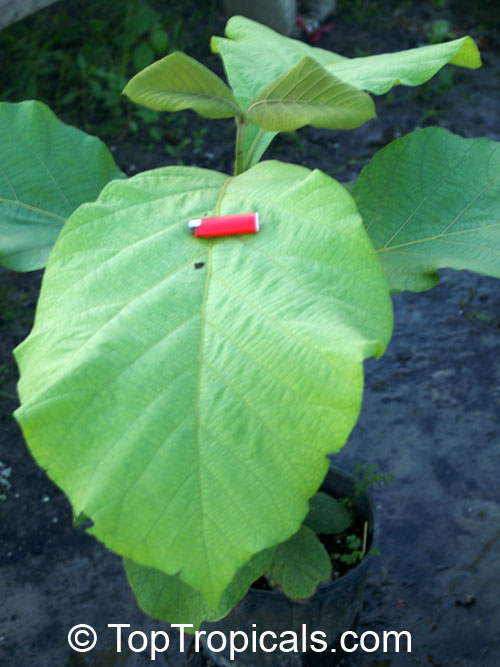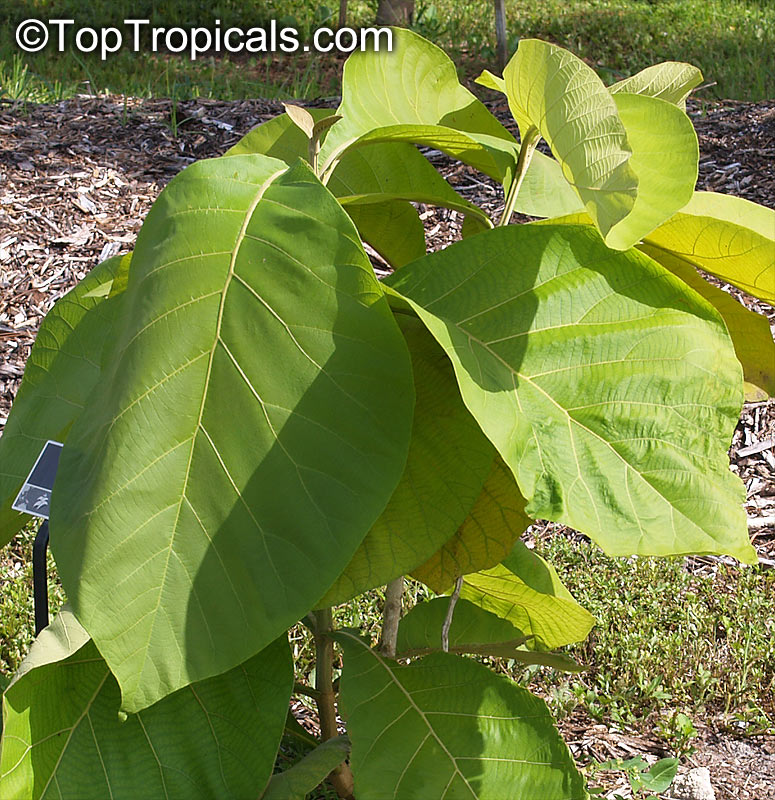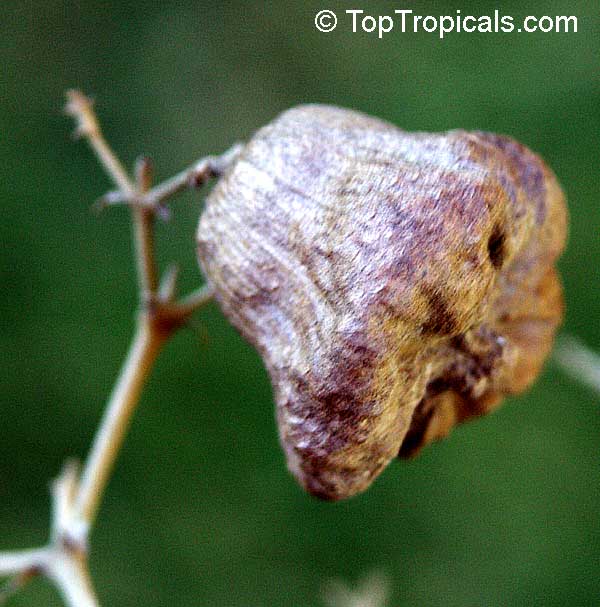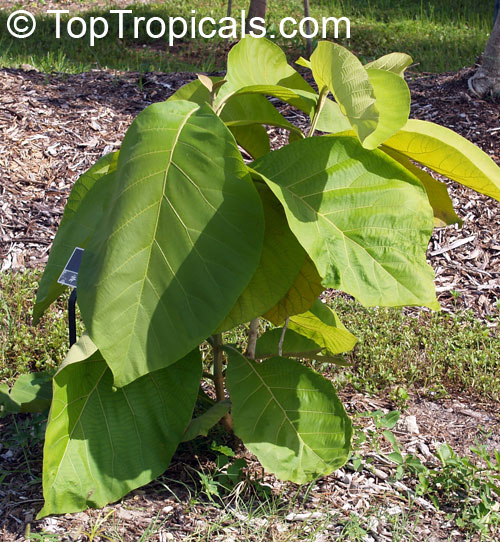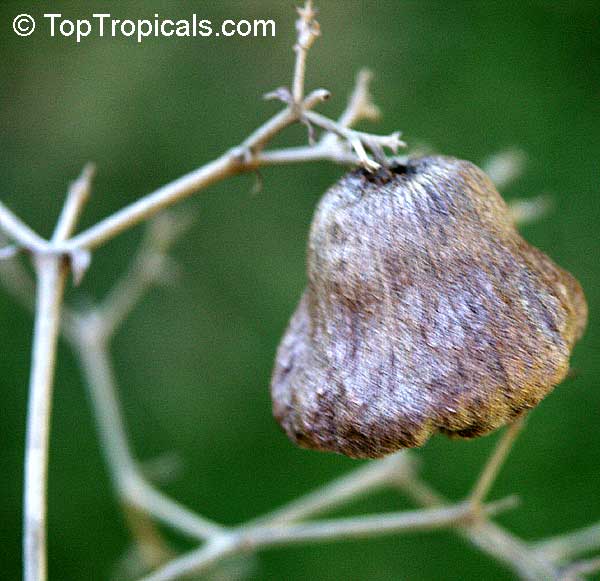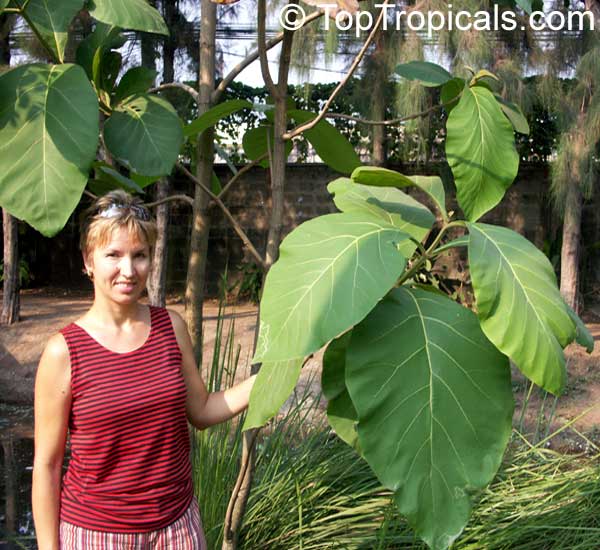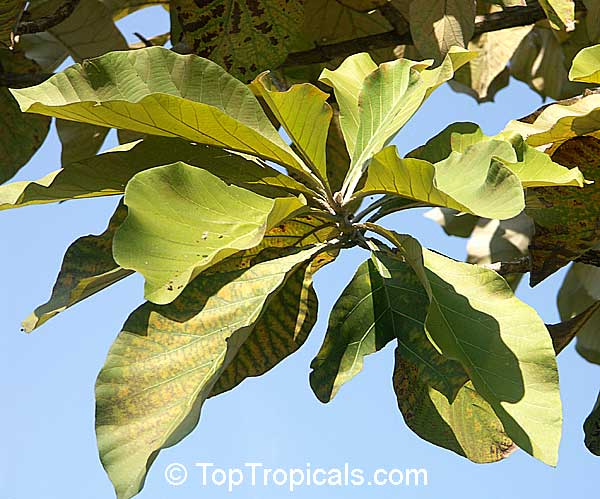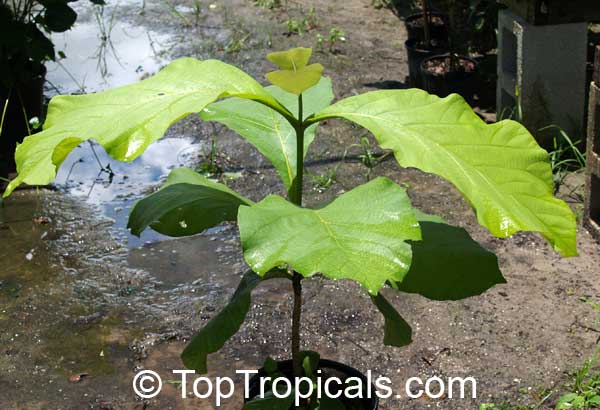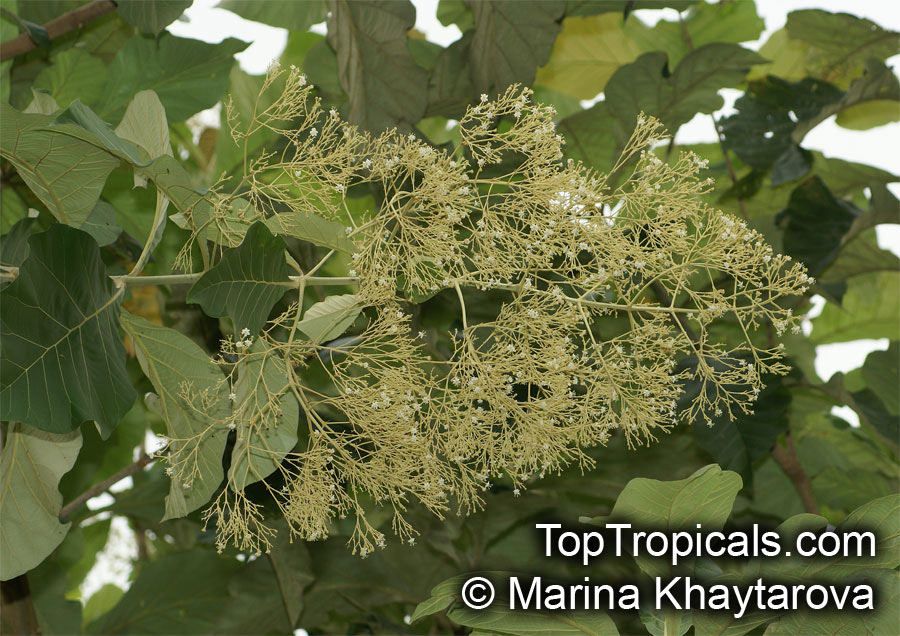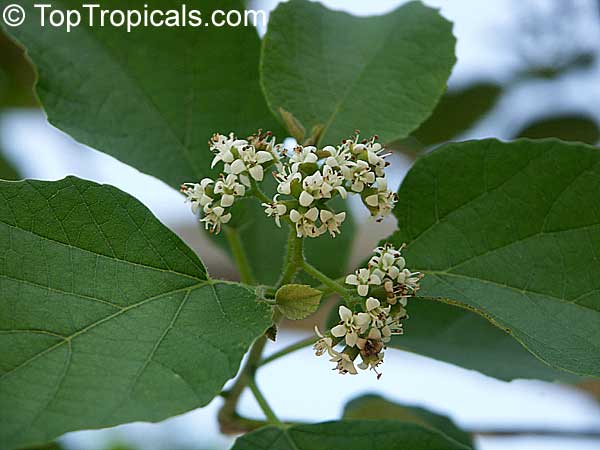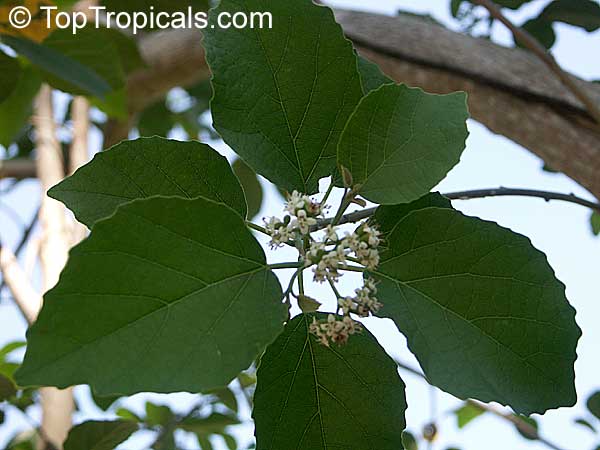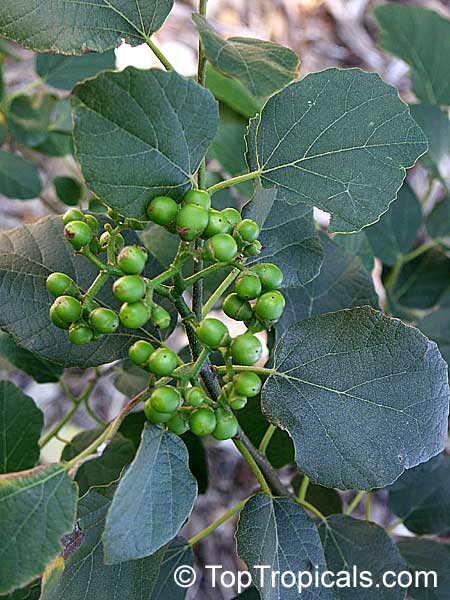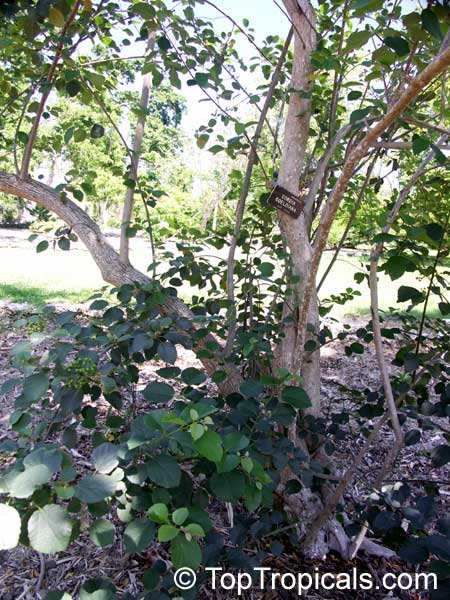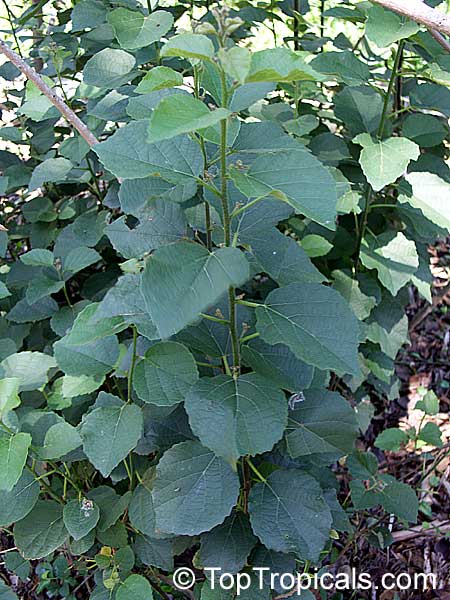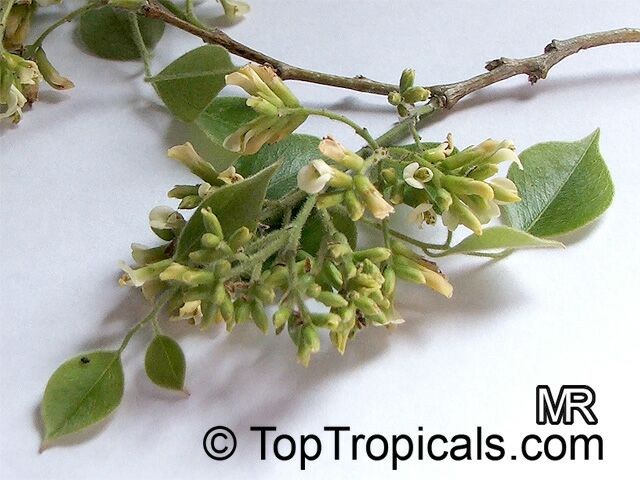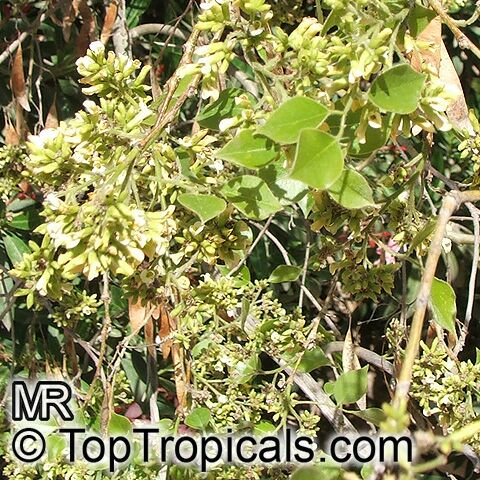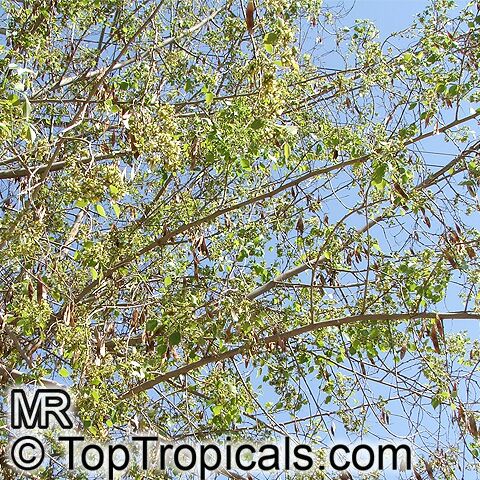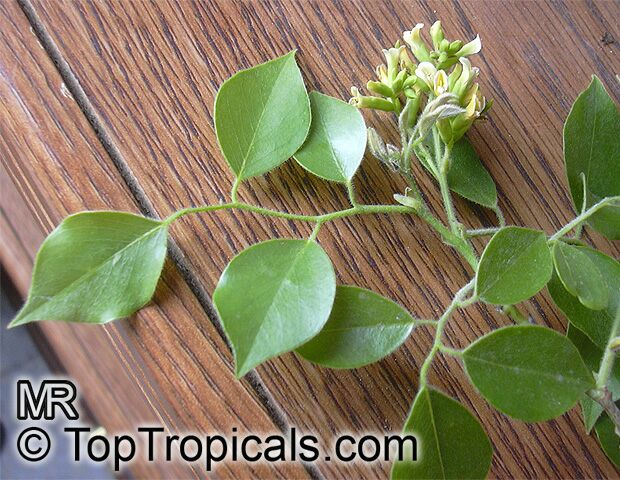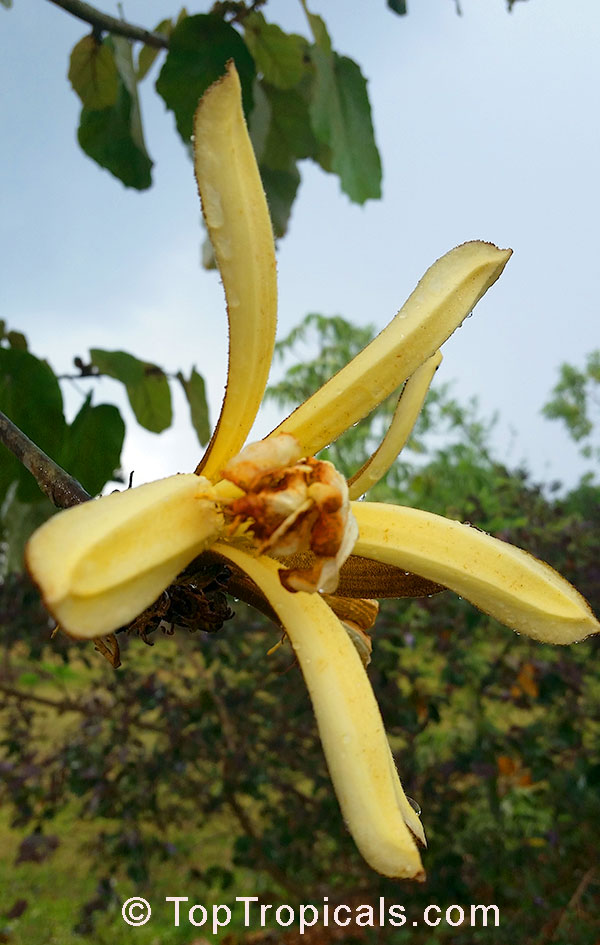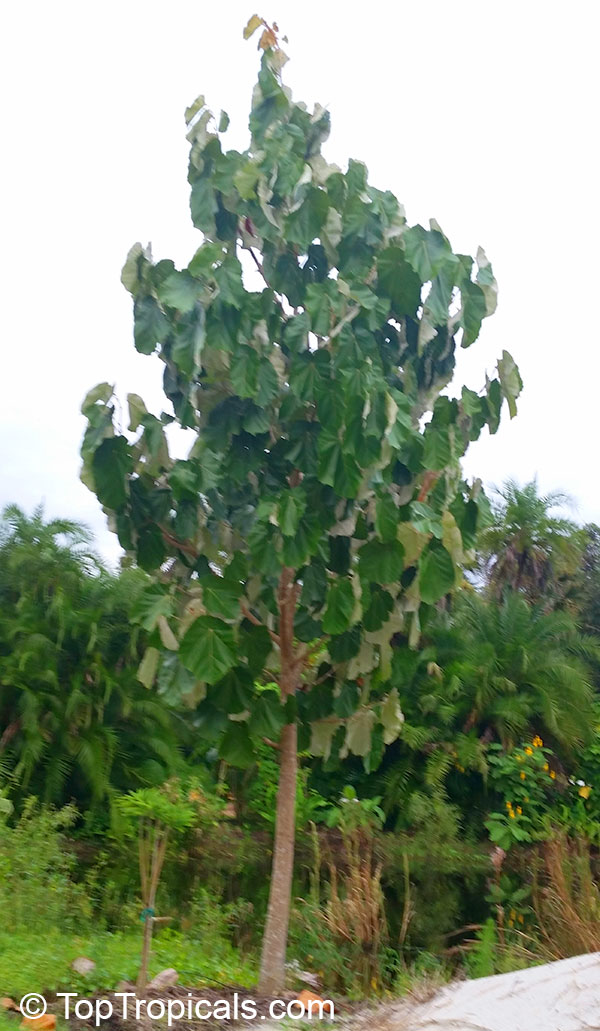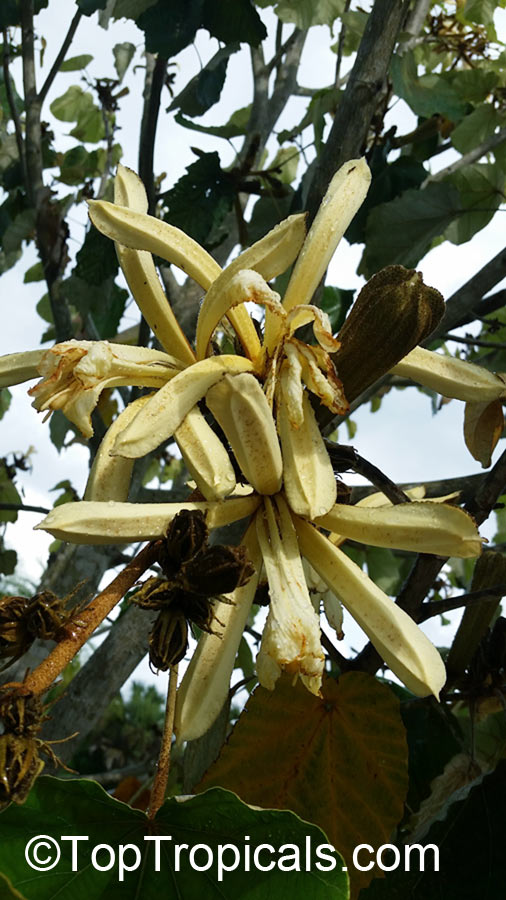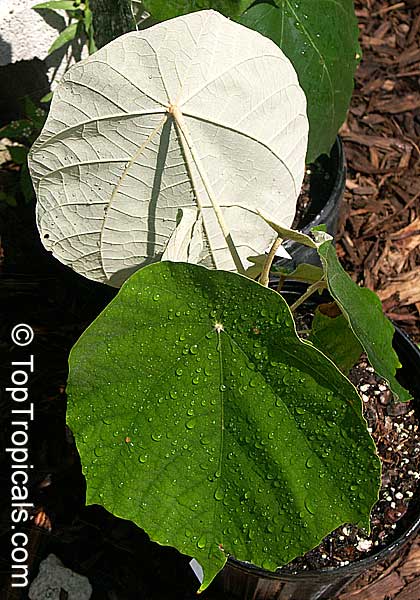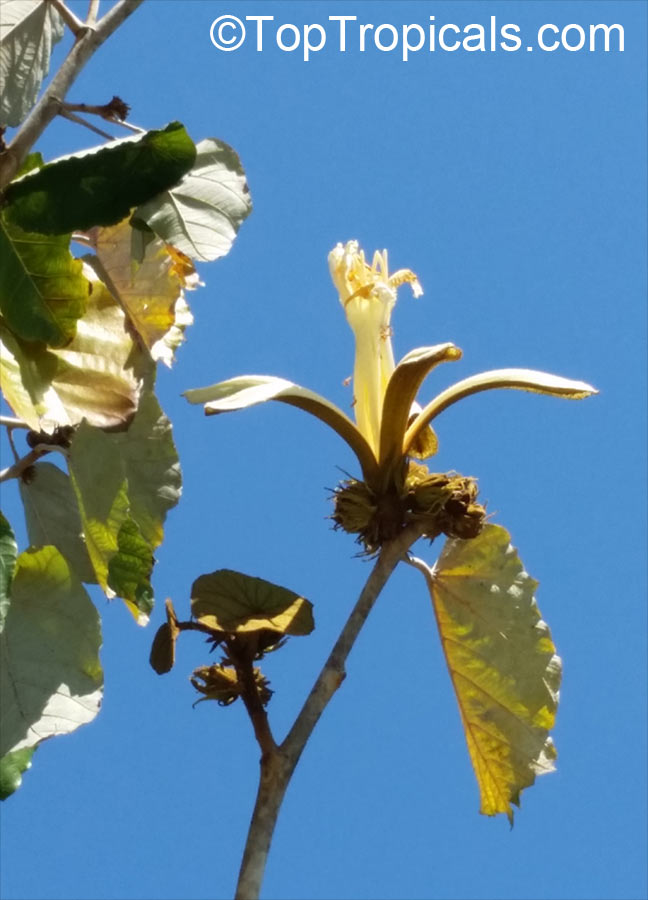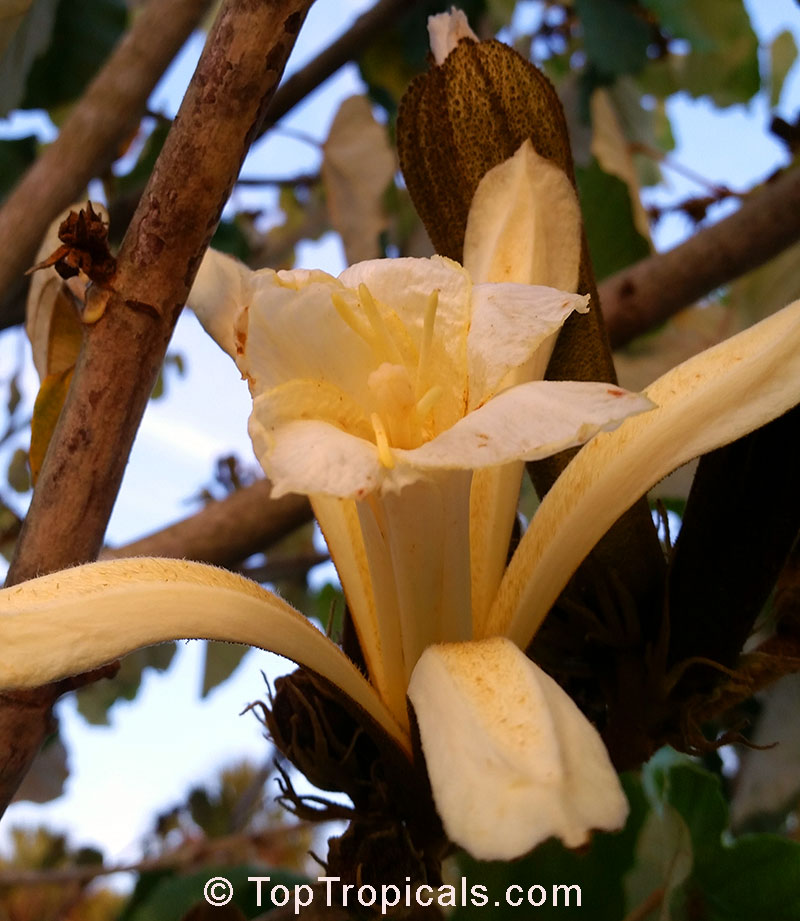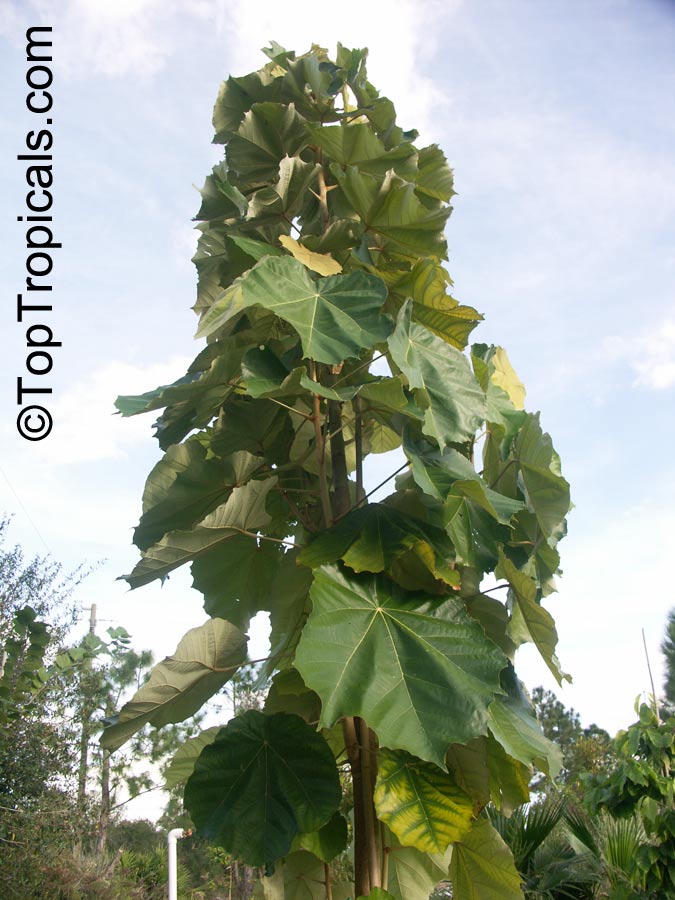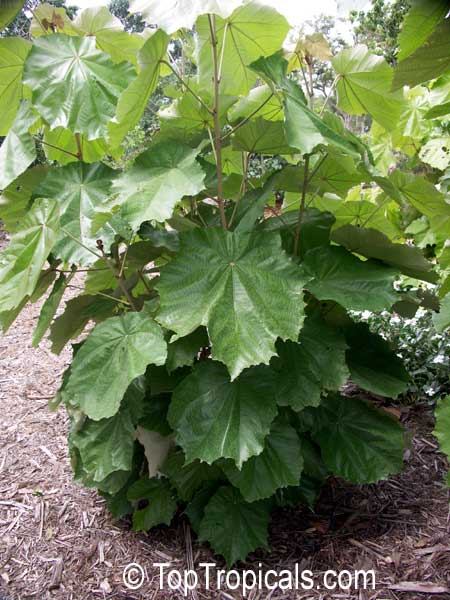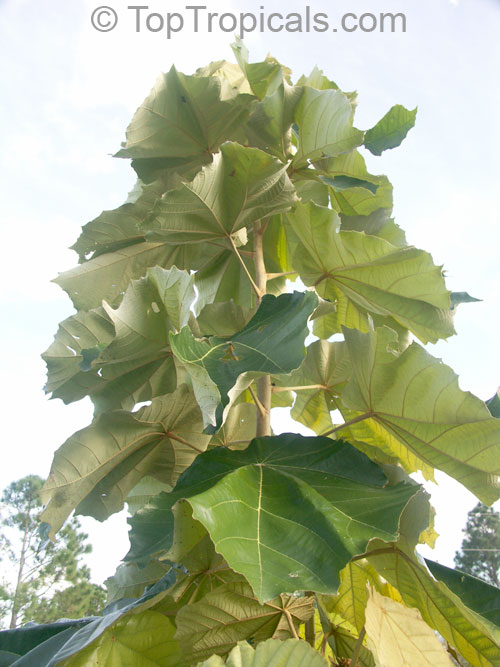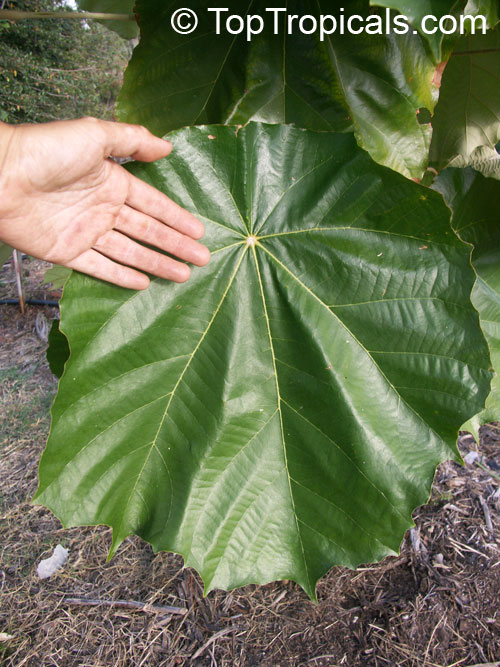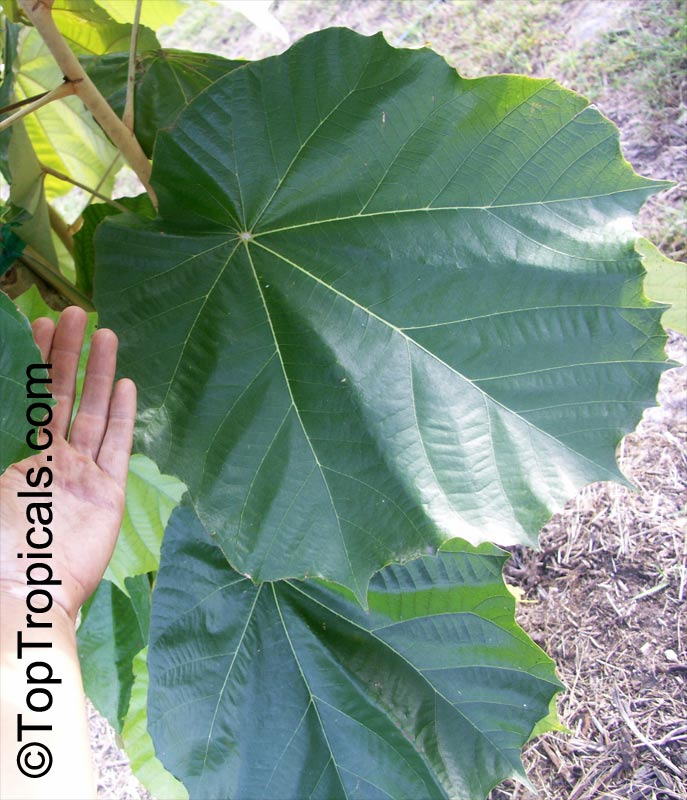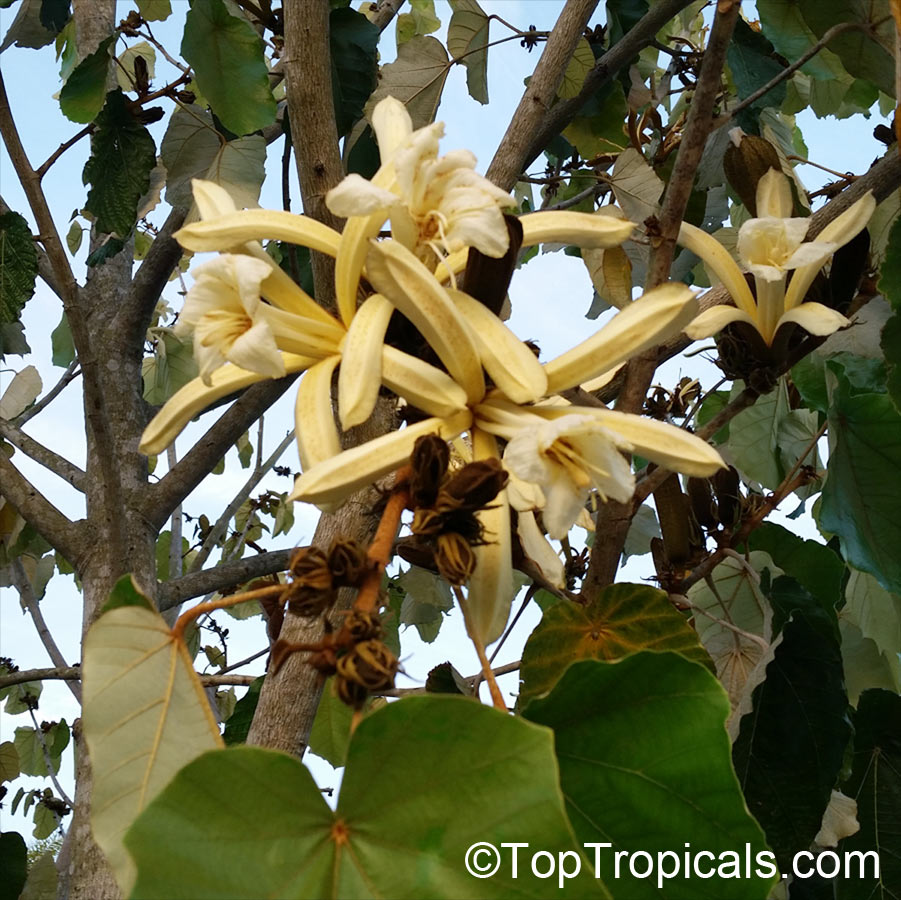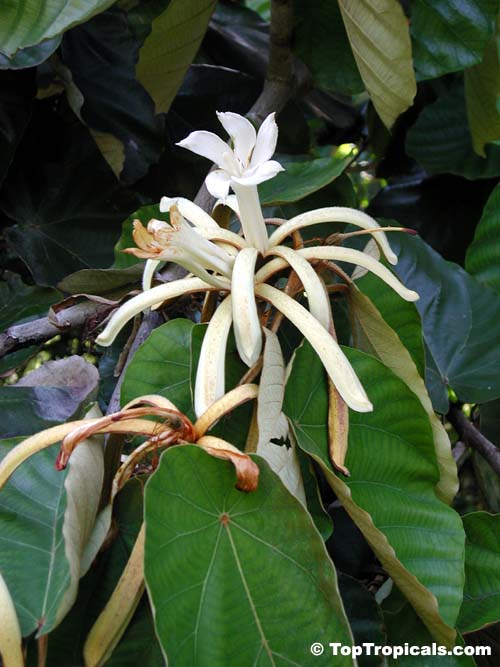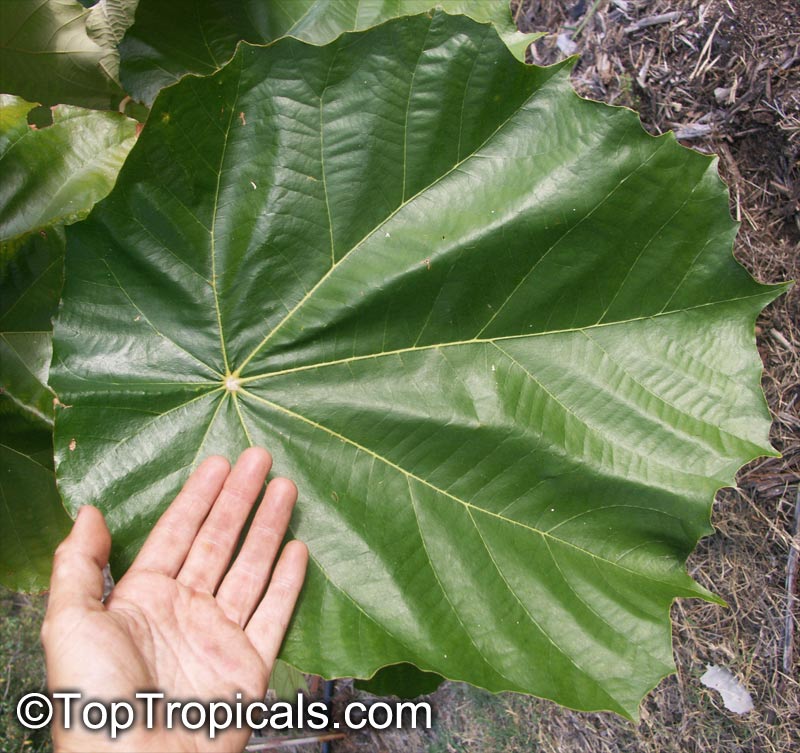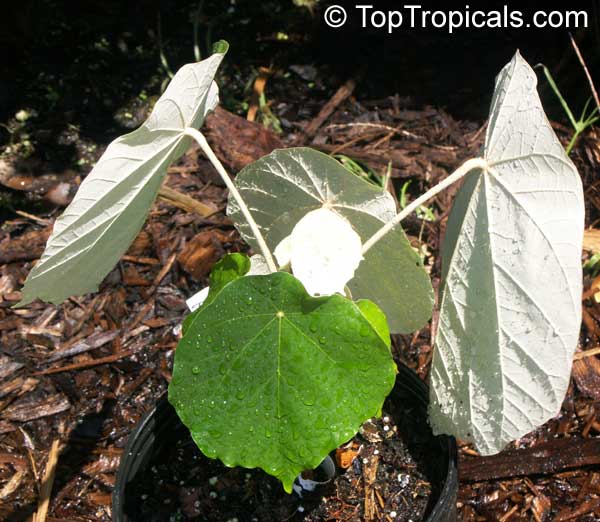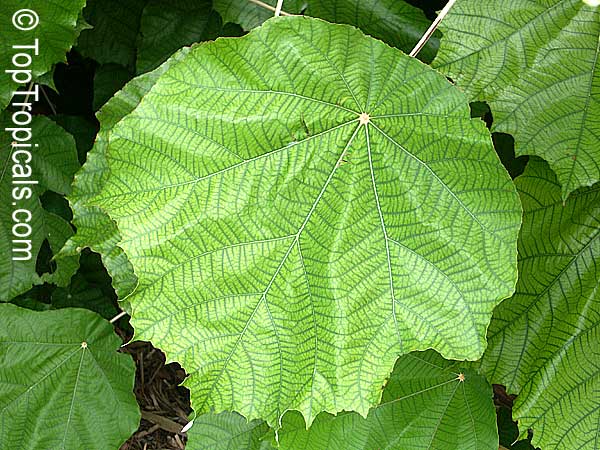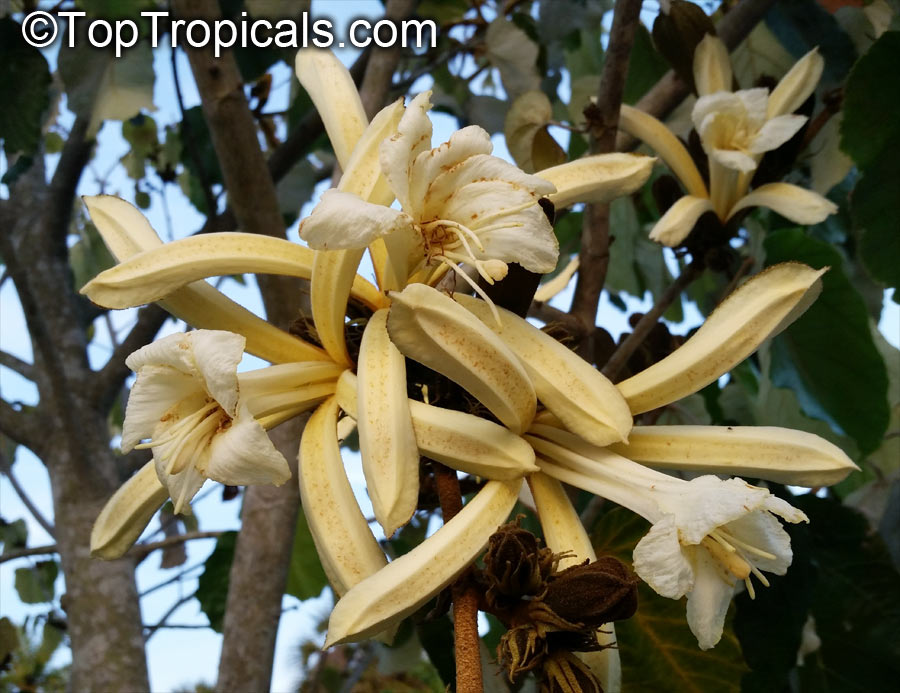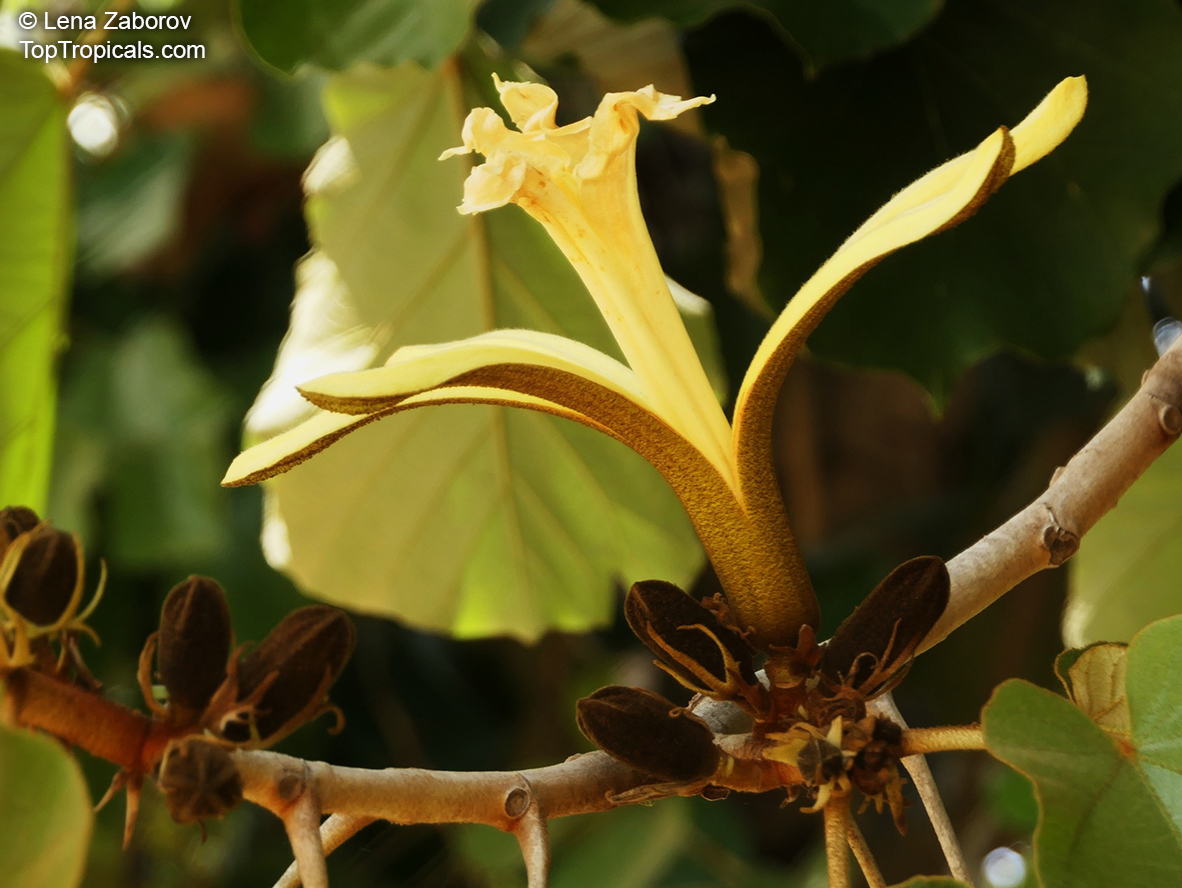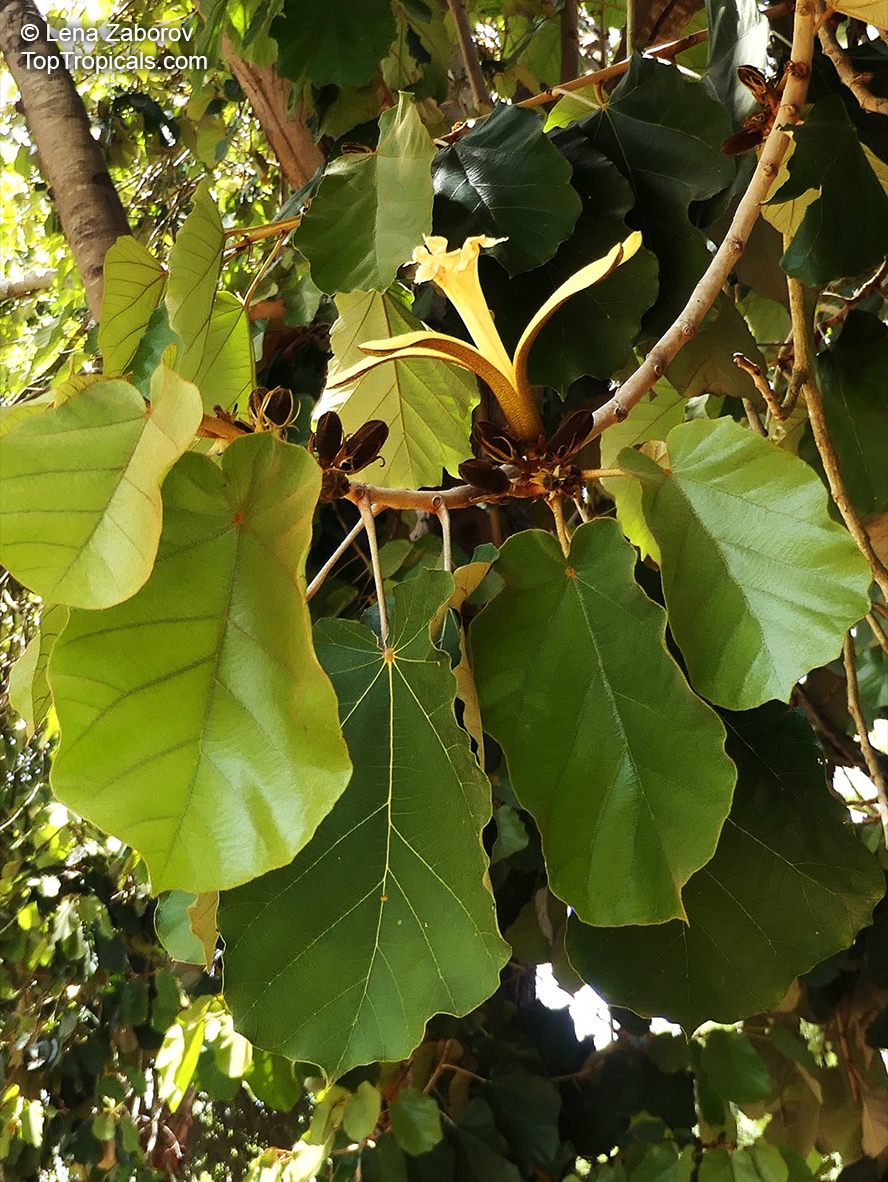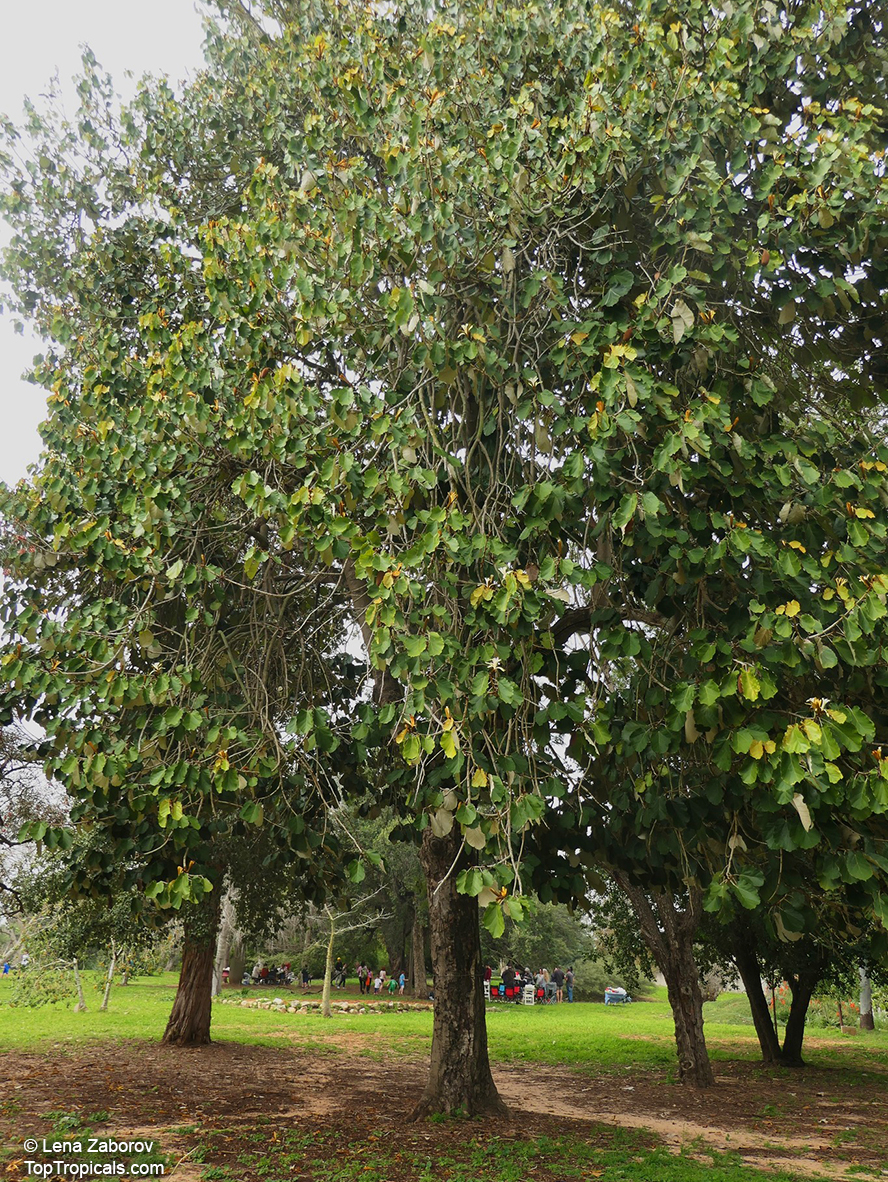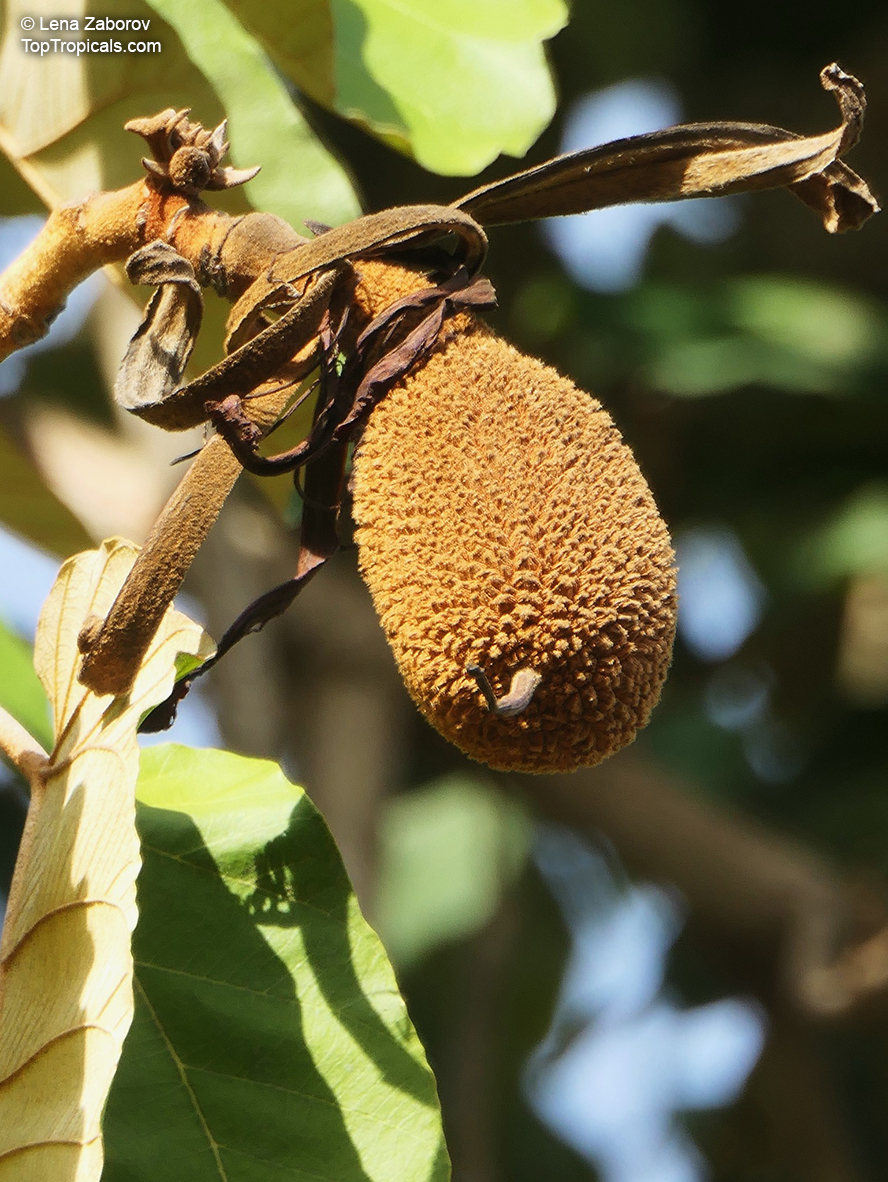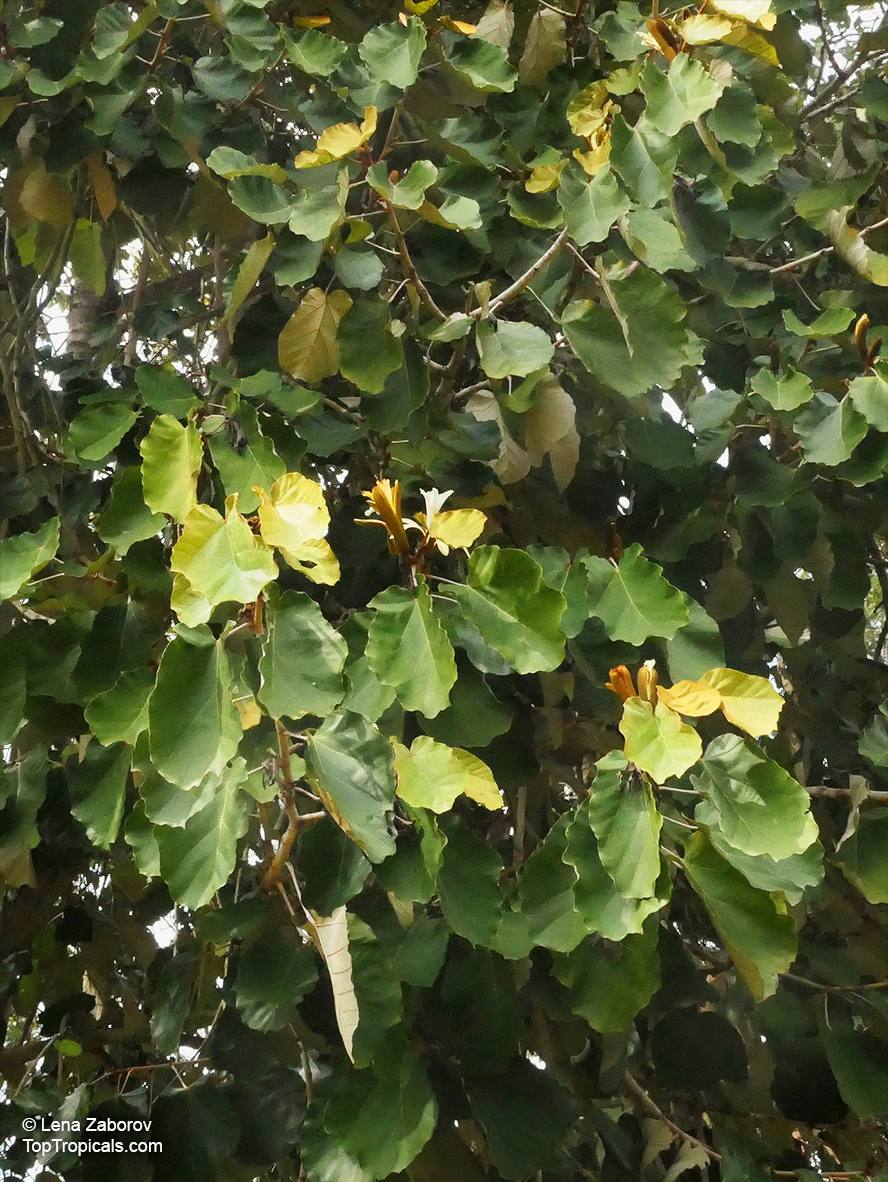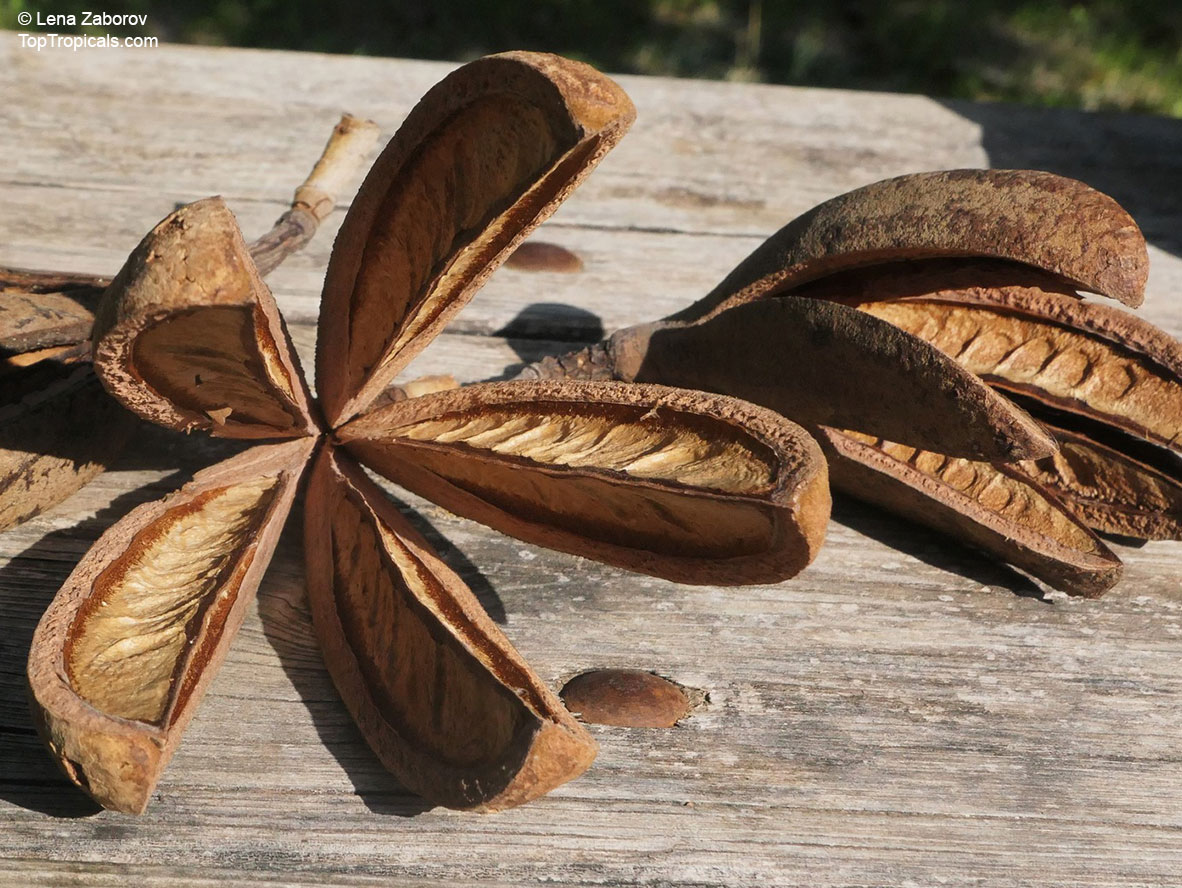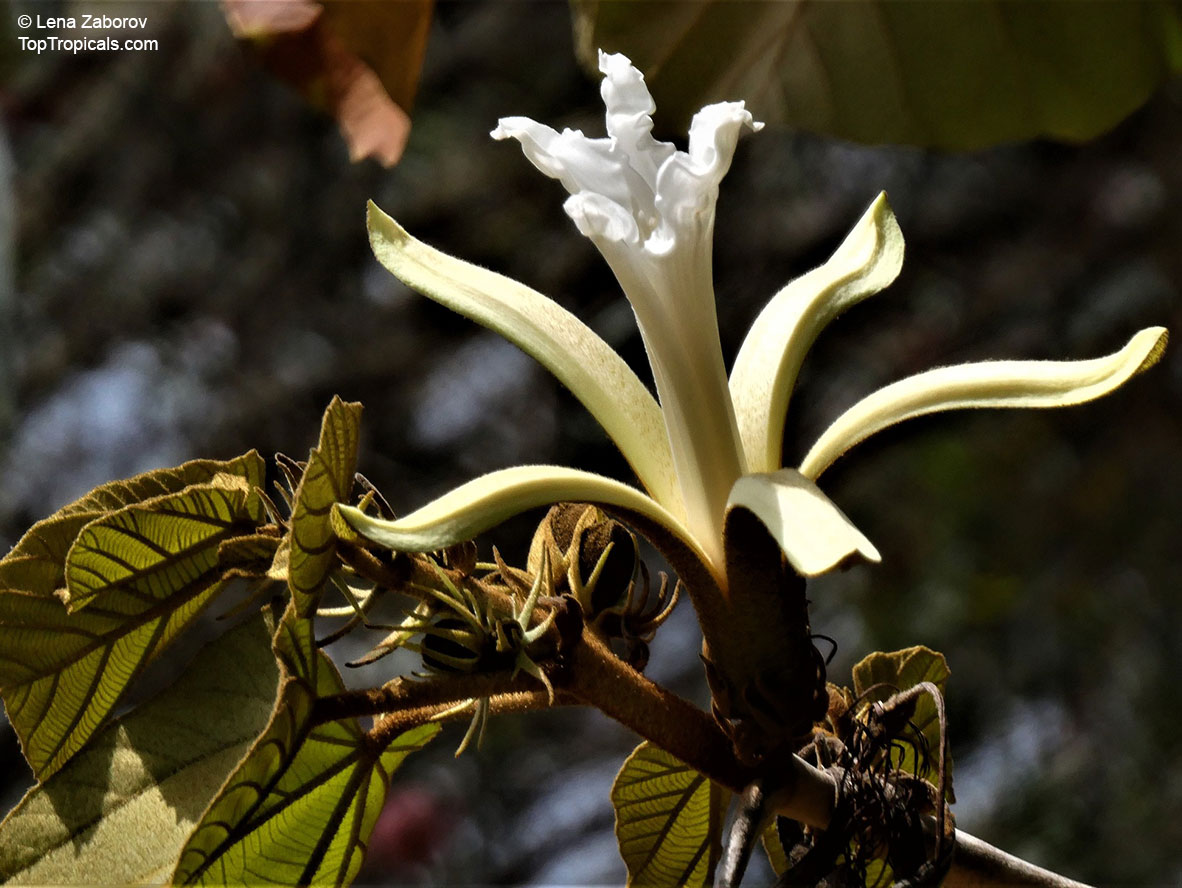Teak - Plant Encyclopedia Results
Top Tropicals Plant Encyclopedia
| Number of plants found: 8 |
Botanical names: Butea monosperma, Butea frondosa, Erythrina monosperma
Common names: Flame of the Forest, Dhak, Palas, Bastard Teak, Parrot Tree
Family: Fabaceae
Subfamily: Faboideae
Origin: India, Sri Lanka










This tree has stunning flower clusters. In the habitat it can grow tall, but can be grown in container as a small specimen tree. The trunk is very interesting, it becomes twisted, follows no particular pattern, making it a conversation piece. At the base it can form a bottle-like caudex if grown in a pot. It is slow growing and attains a height of about 15-20 ft when mature at the age of about 50 years or so. The bark of Dhak is fibrous and bluish gray to light brown in color. It exudes a kind of red juice when injured. That dries into a very useful gum. The leaves are large, up to 1 ft wide and long, compound, each has three leaflets with tough texture: coriascious with the surface glabrescent above and hairy silken beneath. The leaves fall off by December and reappear during spring. When the tree is leafless, it bears flaming orange to red-colored flowers appearing in February and stay on nearly up to the end of April. The flowers form a gorgeous canopy on the upper portion of the tree, giving the appearance of a flame from a distance. The fruit of palas is a flat legume; young pods have a lot of hair a velvety cover. The mature pods hang down like peculiar legumes. This plant is useful in many ways. Its leaves are essential for various religious rituals in Hindu homes. These are also used as cheap leaf plates and cups for rural feasts. In some parts of the country these are used for wrapping tobacco to make biddies. These are further used as packing material for parcels. The cattle also eat the Dhak foliage quite greedily.The bark of Dhak yields a kind of coarse and brown colored fiber, which is used for rough cordage. Butea gum is a dried astringent juice obtained from incisions in the stem of the tree. The juice exuded by the bark hardens in to brittle ruby colored gum beads. This gum is sanctioned to be used as a substitute for the kino gum. It finds use for caulking boats as well. The Dhak flowers yield an orange dye. The seeds are used in Ayurvedic and Unani medicine for treating a number of human maladies. The Dhak tree acts as a host for lac insect and is, therefore, useful in producing natural lac. Use it as a specimen, or as a background component of the canopy. The tree loses its leaves as the flowers develop, in January - March. The plant has a good salt-tolerance, it can be used in coastal areas, but protect from direct exposure to salt spray, which will burn the leaves. See article about this plant with PICTURE GALLERY of Butea.
Botanical name: Flindersia sp.
Common name: Australian Teak
Family: Rutaceae
Subfamily: Zanthoxyloideae
Origin: Australia




Trees in the genus Flindersia have simple or pinnate leaves, flowers arranged in panicles at or near the ends of branchlets and fruit that is a woody capsule containing winged seeds. The tree is harvested from the wild for its useful timber. It is sometimes planted as an avenue tree.
Botanical names: Gmelina macrophylla, Ephialis simplicifolia, Gmelina dalrympleana, Vitex dalrympleana, Vitex macrophylla
Common name: Grey Teak
Family: Lamiaceae
Origin: Australia, New Guinea








Botanical name: Intsia bijuga
Common names: Vesi, Merbau, Borneo Teak, Island Teak
Family: Fabaceae
Subfamily: Caesalpinioideae
Origin: Eastern Africa, Madagascar, southern Asia, Malesia to Caroline Islands








A spreading tree up to 40 m (130 ft) tall, Vesi is undoubtedly one of the most highly valued trees in the Pacific islands, both in terms of its traditional cultural importance and its value for commercial timber. Its durable, easy-to-work, attractive dark red-brown wood is especially favored for use in house building, furniture, and woodcarving. The tree was so extensively exploited in Southeast Asia for its timber that few natural stands remain.
Vesi has a wide range of environmental and climatic tolerances. It prefers wet, hot climates but can tolerate annual dry seasons. The tree occurs most frequently in coastal and lowland forest on well drained or swampy sites. It is also found in tropical rainforest, in primary or old secondary forests, and in open forests. The species also occurs in wet ground on the inner edge of coastal mangrove swamps.
Botanical name: Tectona grandis
Common name: Teak
Family: Verbenaceae
Origin: Tropical Asia




Teak is considered a very valuable wood because of its ability to withstand weather. It even prevents any metal used in it from rusting. Teak is very stable, which means that it does not warp when subjected to variations in humidity and temperature. According to Ayurveda, wood is acrid, cooling, laxative, sedative to gravid uterus and useful in treatment of piles, leucoderma and dysentery. Flowers are acrid, bitter and dry and useful in bronchitis, biliousness, urinary discharges etc. Roots are useful in treatment of urinary system related troubles. According to Unani system of medicine, the oil from flower is hair promoter and useful in scabies. Wood is good for headache, biliousness, burning sensation and pain and liver related troubles. It allays thirst and possess anthelmintic and expectorant properties. Wood is used for ship building, railways, piles in harbour, bridge-building, construction work, furniture and cabinet work. Leaves yield dye, which is used for dyeing cotton and wool. It prefers no competition, so for the first few years, it has to be cleared of weeds and kept from being shaded. After about three years, the trees are large enough to shade out competing vegetation. Teak requires very good drainage and rich soil. It prefers a dry season of about three months.
Botanical name: Cordia goeldiana
Common names: Freijo, Jenny Wood
Family: Boraginaceae
Origin: Brazil





Freijo is very similar in strength properties to Teak, and is occasionally used as a substitute for Teak in building ships.
Botanical name: Dalbergia sissoo
Common names: Sisu, Sissoo, Indian Rosewood
Family: Fabaceae
Subfamily: Faboideae
Origin: India, Pakistan and Afghanistan








After teak, it is the most important cultivated timber tree in India, planted on roadsides, and as a shade tree for tea plantations. Sissoo makes first class cabinetry and furniture. It is used for plywood, agricultural, and musical instruments, skis, carvings, boats, floorings, etc. The leaves are used for fodder.
Botanical name: Pterospermum acerifolium
Common name: Dinnerplate Tree
Family: Malvaceae
Subfamily: Dombeyoideae
Origin: Burma






This evergreen fast-growing tree can reach a mature height taller than 20 ft and like full sun and a good amount of regular water. It produces white or off-white flowers in summer, which are fragrant and attract butterflies and hummingbirds. The Dinnerplate Tree (Pterospermum acerifolium) is native to Burma (Myanmar) but is used around the world as a street tree or specimen tree and is considered to be cold hardy down to at least 30s F (USDA zone 9-11).
The Dinner plate tree is outstanding for avenue plantation. Its broad and dense leaves give complete shade. The large flowers are unique in shape and have an exotic fragrance. the grounded flower petals cure chronic headache. The outer sepal is of light yellow color. The flower is funnel shaped and white. The whole flower gives the look of a designer garment. Huge leaves used as plates in India, where it is grown for shade and for valuable timber similar to oak and teak.
When grown in a pot the Dinnerplate Tree should be given a sheltered, bright location and watered regularly during the growing season. It's important to protect it from any cold winter temperatures, especially if it is grown in a pot. It is best to bring the pot holder inside to a sheltered area during the winter. If the plant is kept in a pot in a cold region it can be brought inside when needed, or covered with burlap to protect it from cold temperatures. During the winter months the tree should have reduced water and should only be watered when the soil becomes dry.
Use link to repeat this search:
https://toptropicals.com/cgi-bin/garden_catalog/cat.cgi?find=Teak&search_op=and&keyword_op=and&language=e&number=10
&no_change_lang=1&user=tt&sale=1&first=0
